Exactly a week after the previous day trip to visit three Kent churches and Great Dixter, I was back out again with a very ambitious list of churches in Sussex to visit. This was by far the longest list (seven churches and a musuem) and I was determined to see them all. At the last minute a photographer friend told me about an arts & crafts chapel just off the A3, Watts Cemetery Chapel, so I duly added this to my list especially as I was driving right past it. She also recommended my going to the beautiful, chocolate box village of Selbourne in East Hampshire where there is a fascinating museum.
Here’s the ambitious list (images on the right are in the order that they are listed below):
Watts Cemetery Chapel, Compton
I left home at 8am and arrived at Watts cemetery chapel by 8.40am. The chapel opens at 9am so I had 20 minutes to admire this quite extraordinary building and cemetery in the early morning light. It’s literally a minute’s drive off the busy A3 road on the edge of the village of Compton.
It is a Grade I listed building in the Art Nouveau version of Celtic Revival style. The exterior is red brick with intricate designs which both fascinate and overwhelm you as you walk up the winding yew tree path. The ground plan of the chapel is circular and from the outside the building looks like a Roman Italianate chapel.
The morning sunlight cast shadows of the cemetery which contains quite a few arts & crafts headstones. Watts Cemetery is more than 120 years old and was conceived and laid out by Mary Watts between 1895 and 1898 with the help of Compton Parish Council. Many of the graves display sayings influenced by the Arts & Crafts movement, including "The Morning Stars Sang Together". Inside the chapel there are sayings like "Their hope is full of immortality but the souls of the righteous are in the hands of God."
The author Aldous Huxley is buried in the Huxley family grave.
On the Watts Chapel website Lucinda Lambton (English writer and photographer) beautifully describes this chapel “'It is no exaggeration to say the Watts Cemetery Chapel is one of the most beautiful, extraordinary, original, marvellous and magical buildings in the whole of the British Isles!”
The caretaker duly arrived at 9am to open the chapel and I had it all to myself. In fact, at every church I’ve visited to date there’s not been a soul around. I visited the chapel on two consecutive days as I left my spectacles there hence why there is blue sky in the first image (day 2) and grey skies in the other images!
Mary Fraser-Tytler, wife of the painter and sculptor George Frederic Watts, was the artistic force behind the creation of Watts Chapel; both she and her husband are buried in the cemetery and have memorials in the cloister.
In 1895 they had recently completed the build of their home Limnerlease nearby and Mary volunteered to design a chapel and her husband agreed to fund it (by painting commissioned portraits. Mary was a follower of the Home Arts & Industries Association set up by Earl Brownlow in 1885 to encourage handicrafts among the lower classes. The chapel was the Watts’ contribution to this typical Victorian preoccupation with social improvement through creative enlightenment. Mary began to run evening Terracotta Classes in her sitting room where she would teach local villagers how to model the decorative terracotta tiles that would be used on the exterior walls of the Chapel. The chapel was consecrated by the Bishop of Winchester in 1898 and remains a working chapel and graveyard. Under Mary’s guidance villagers helped decorate the chapel resulting in an interior fusing art nouveau and Celtic influences combined with Mary’s own style.
I found it hard to extract myself from this remarkable place. Further down the A3 road I took the exit to the village of Selborne. This quintessentially English village is chocolate box pretty with beautiful houses on the high street and side roads many of which are thatched.
Selborne is famous for its association with the C18 naturalist Gilbert White who lived at The Wakes on the high street and wrote The Natural History and Antiquities of Selborne. White is considered to be the first ecologist/environmentalist. Most of his theories are still relevant but he did have a few strange theories, for example, that not all swallows, martins and swifts migrate, but that some might actually hibernate. However White was the first person to discover that swifts mate on the wing.
The Wakes is now a museum, Wakes Museum, which also contains the Oates museum with an exhibition of the life of Captain Lawrence Oates who died on Robert Falcon Scott’s ill-fated expedition to Antarctica in early C20 and Frank Oates, his uncle, an explorer and naturalist, who mounted expeditions in the late C19 into Central America and Africa. It’s a fascinating museum and well worth a visit.
I didn’t have time to visit the church in Selborne but I returned to Hampshire on 5 Sept and it’s on the list of churches that I’ll visit.
It was a 20 minute drive to the next church, St George’s, Trotton. This Grade I listed church is right on the busy A272 road. It has the most marvellous series of medieval paintings, memorial brasses and the C14 Camoys tomb.
When you enter your eyes are immediately drawn to the C14 wall paintings that cover the west wall and much of the north wall facing the entrance. Above the south door are further paintings, though these are more worn and indistinct.
The paintings on the west wall represent the Seven Deadly Sins and the Seven Acts of Mercy, flanking a figure of Christ in judgment rising above a very large figure of Moses holding the Tables of Law. Below Moses is a large Consecration Cross. The colours on this group of paintings are so vivid despite being over six centuries old!
Directly in front of the altar is a large C14 table tomb, topped with magnificent memorial brasses of Thomas de Camoys and his wife Lady Margaret de Camoys. Sir Thomas commanded the left flank of the English forces at the Battle of Agincourt in 1415 and was awarded the Order of the Garter for his contribution to the English victory.
Two minutes away was the next church, St Mary’s, Chithurst, which is one of the most beautiful little churches that I’ve seen to date. It’s a late C11, probably dating from shortly after the Norman Conquest, in the most idyllic of settings at the end of a lane near the river Rother. It’s built on the top of what was probably an earlier buriel mound. We know that it existed in 1086 as it is mentioned in the Domesday Book of that year. It is a very simple little country church with no particular historic features but it is so charming and peaceful. The graveyard has been left unmown which just adds to its charm and it’s surrounded by woodland. There are some C11 and C12 grave slabs. I spent about 20 minutes here soaking up the silence and beauty.
The next two churches are in the Mardens. The first St Peter’s, North Marden, is the remotest of the Mardens churches, in one of the remotest areas of the Sussex Downland. There has probably never been a village there, just a scattered collection of farms and cottages. The little flint church is down a lane beside farm cottages.
It is the only church in Sussex with an apse but no chancel arch; the few other apsidal ones have separate chancels. The only original window is in the west gable, though the C19 round-headed windows of the apse have old rear arches. The fine and little restored round-headed south doorway dates the whole to the second quarter of the C12.
Some restoration was done in 1886-87 which kept much of the charm of the building. Particularly to be mentioned is the new roof, which is beautifully fitted round the apse. The boarded belfry was also replaced. At some point in the C19 a small vestry was added opening off the north side of the nave.
A two minute drive took me to St Peter’s, East Marden, which stands on a spur in a group of houses at a crossroads. It was once described as "the most modest and least ecclesiastical looking church in the world". It stands on a spur of the South Downs.
It consists of an undivided nave and chancel dating from C12/C13, a C17 porch and a vestry added in 1906. It is built of flint rubble with ashlar dressings, has some modern brickwork and is roofed with tiles. A Millennium Tapestry hangs on the North Wall of the Nave.
It was already 1.45pm and I was absolutely starving. I had earmarked a pub, the Crab & Lobster in Sidlesham, for lunch which was a half hour drive away. They stop serving food at 2.30pm and luckily I arrived with ten minutes to spare. Of course I had to have a half lobster with chips and a salad!
Sidlesham is a gorgeous quiet little village that is home to the Pagham Harbour Nature Reserve. The reserve is an important breeding area for over 200 species of birds who are attracted to the wide expanse of tidal mudflats. The Reserve is over 1500 acres comprising saltmarsh, mudflats, farmland, reed beds and shingle beaches. It is really worth a visit and there are also guided walks on the Reserve.
After an hour’s break for lunch and a wander around the parts of the Reserve nearest to the pub, I didn’t visit the church in Sidlesham (there are only so many churches I can visit in a day!) so I hurried to the penultimate church, a 40 minute drive away, as it was one I was very keen to visit. St Botolph’s, in the hamlet of Hardham south of Pulborough, has the earliest nearly complete wall paintings in the whole of England. It is believed to have been built on the eve of the Norman conquest in C11. It has been suggested that some of the stones used for the building work were recycled from the nearby Roman camp.
It is a simple church with just a nave and chancel. The outside walls are whitewashed, something that was very common for medieval churches. Some of the early lancet windows have survived, although in some places larger widows were introduced in the 16th century to allow more light to enter the church.
As you enter the church and your eyes adjust to the light, St Botolph’s ancient wall paintings come into focus. They were discovered in 1862 when the church architect, Henry Woodyer, was engaged to carry out some restoration work. It’s quite amazing to think that these paintings are 900 years old! They are thought to have been painted by a group of artists known as the Lewes Group shortly after 1100. Today their rich colours have faded, but the extent of the paintings, covering almost every part of the church, means that they are among the most important wall paintings in the country.
The paintings include the Annunciation, scenes from the Nativity and the apostles. There is also an interesting depiction of St George. Most notable, however, are the group of paintings in the chancel depicting scenes from the story of Adam and Eve
As with all my church visits I had the place to myself. It was so peaceful just sitting in a pew absorbing the silence and the smell of history. Each church has its only smell, the older they are the stronger the smell of history pervades.
It was a half hour to the final church, Holy Trinity, Rudgwick, and by now it was getting rather late but at least the church was on my route home. Rudgwick is near the Surrey border and the church is at the upper end of the village approached through a gap in a row of cottages. It’s Grade I listed, C12 with the tower and south nave wall probably C13.
The chancel and north aisle are C14. It’s a lot larger than any of the other churches I saw that day so it didn’t have the wonderful intimacy and simplicity of all the others.
The earliest reference is 1210 (the font is the oldest part of the church) and the tower can be dated to the early C13, despite later alteration.
After visits to seven churches and a museum my brain was fried and I was pleased to arrive home, exhausted but full of inspiration after a day of so much beauty.

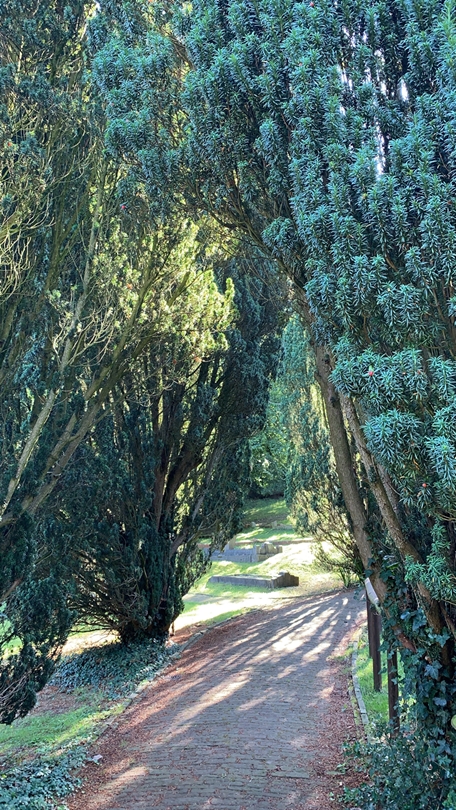
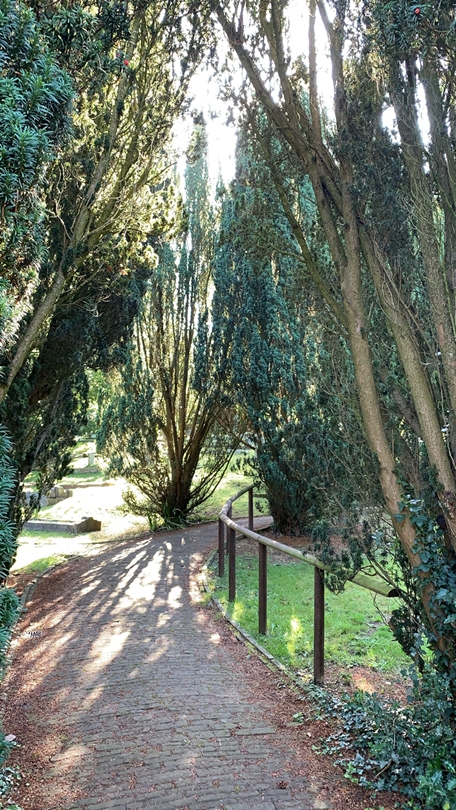

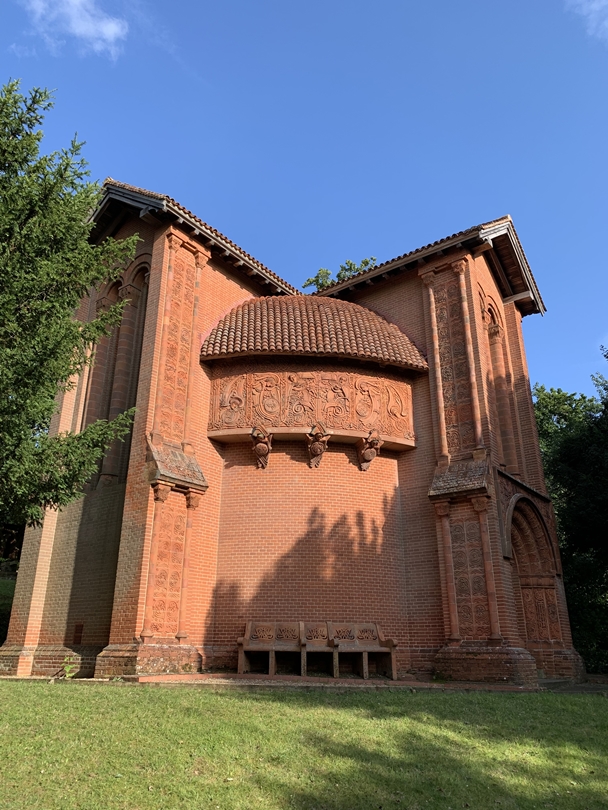
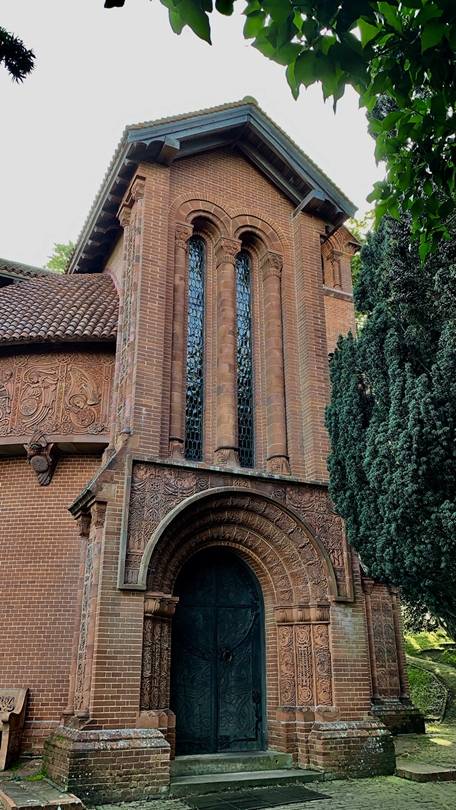
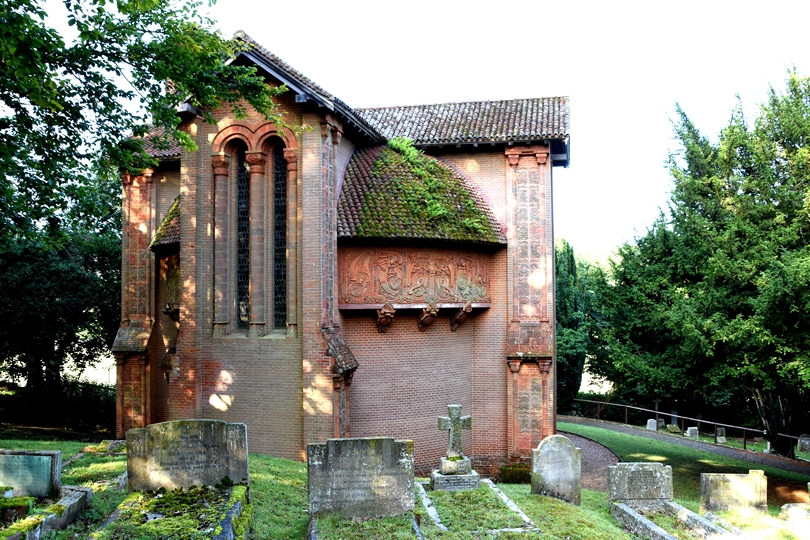
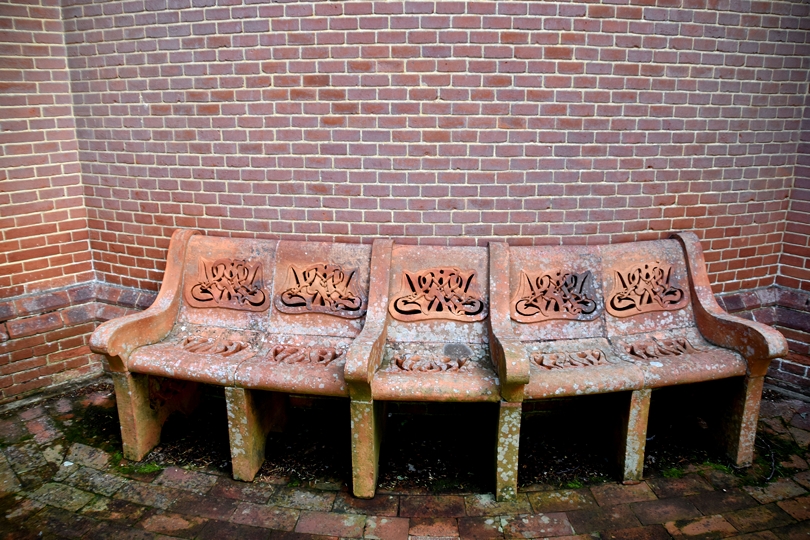

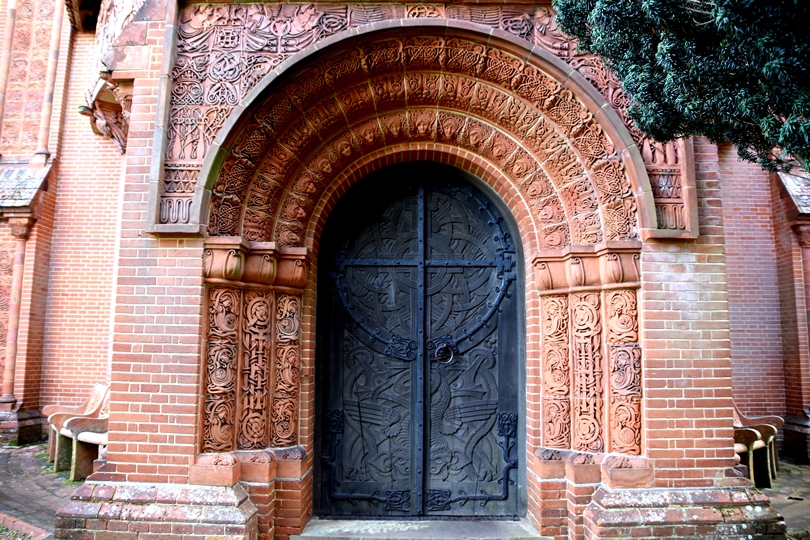
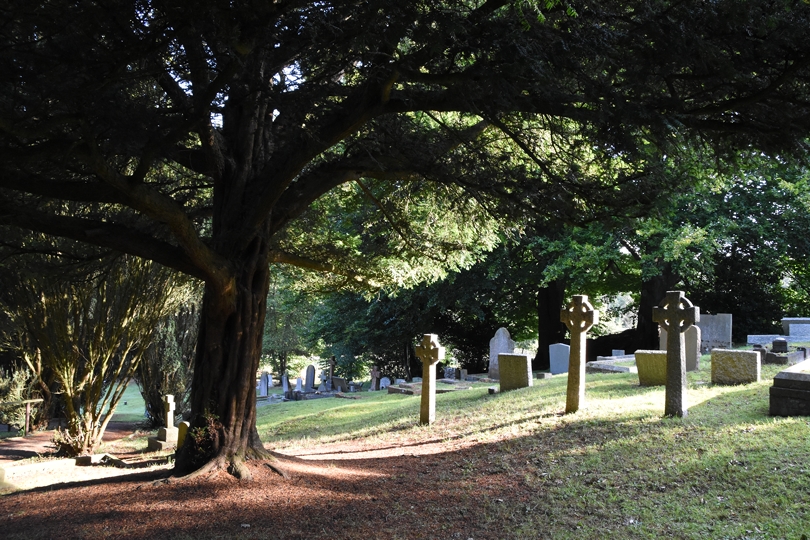
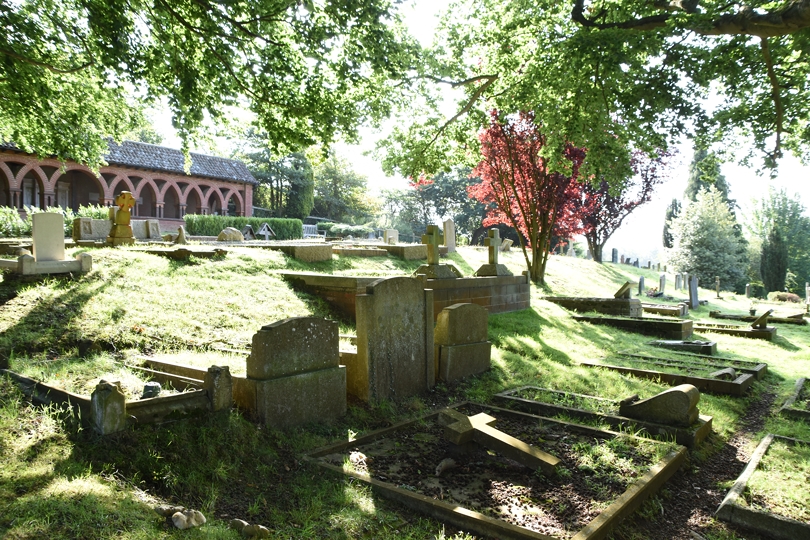

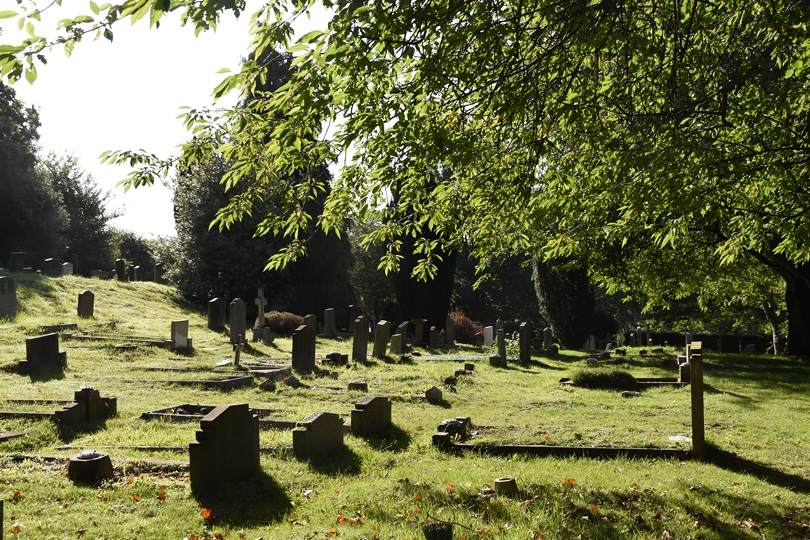
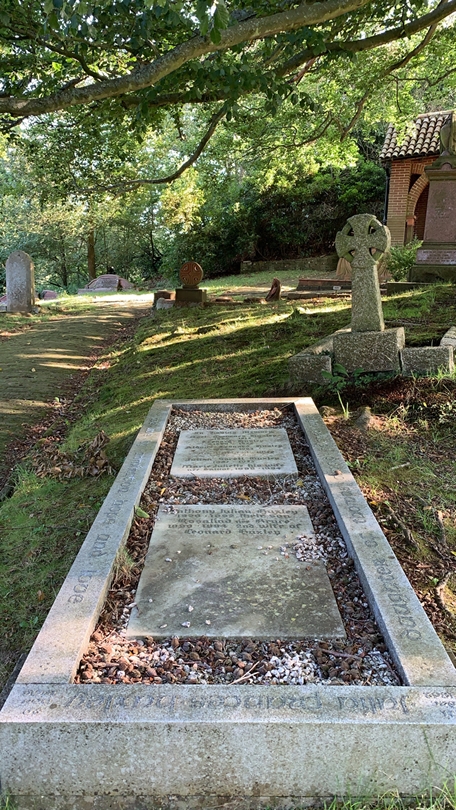
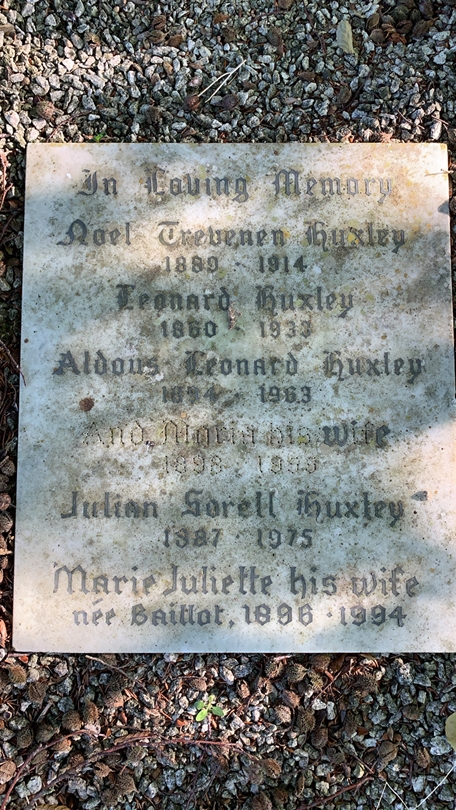
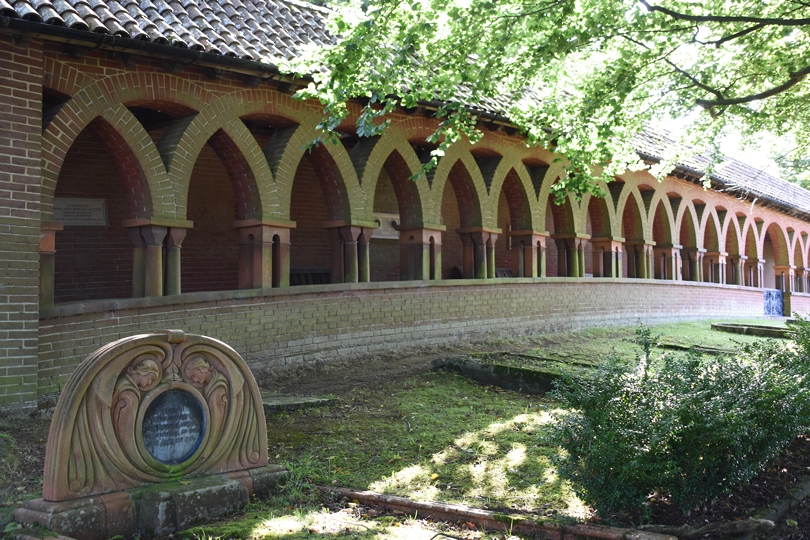
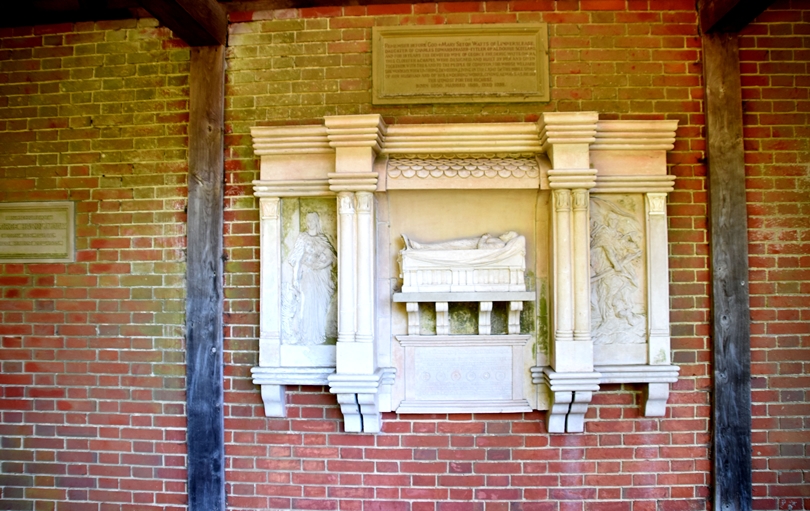

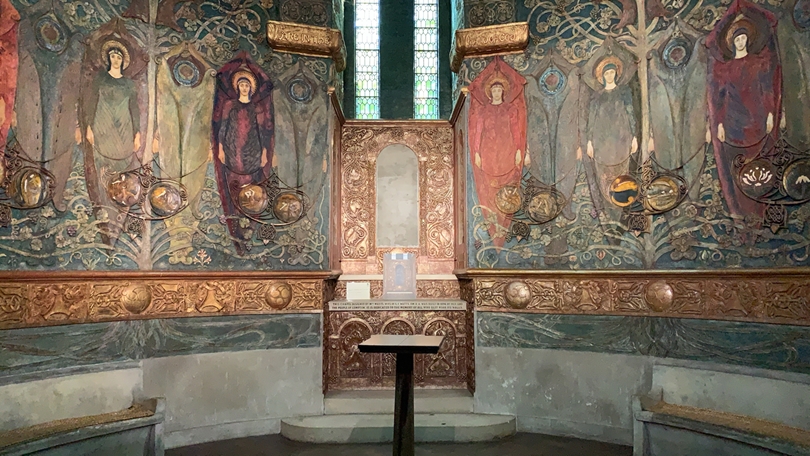
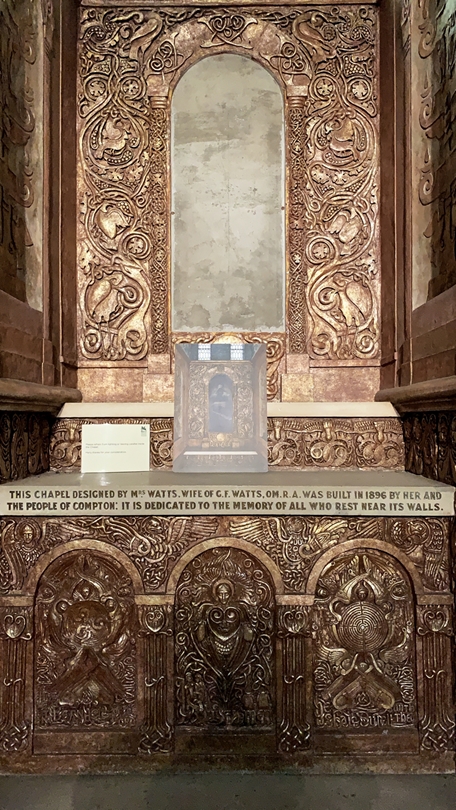
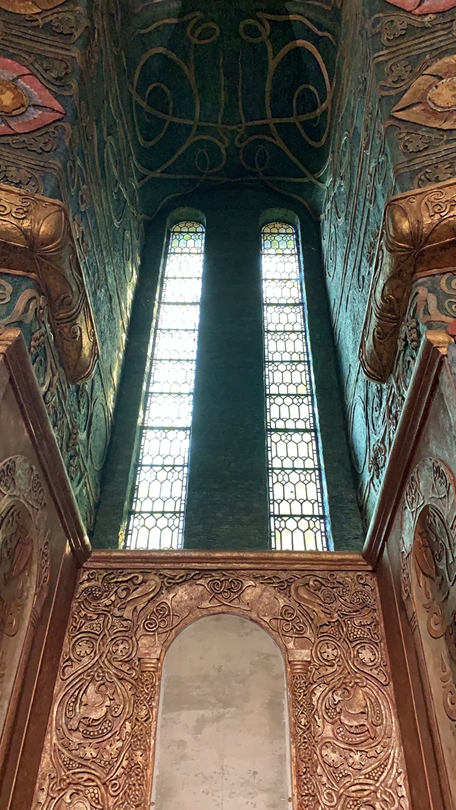

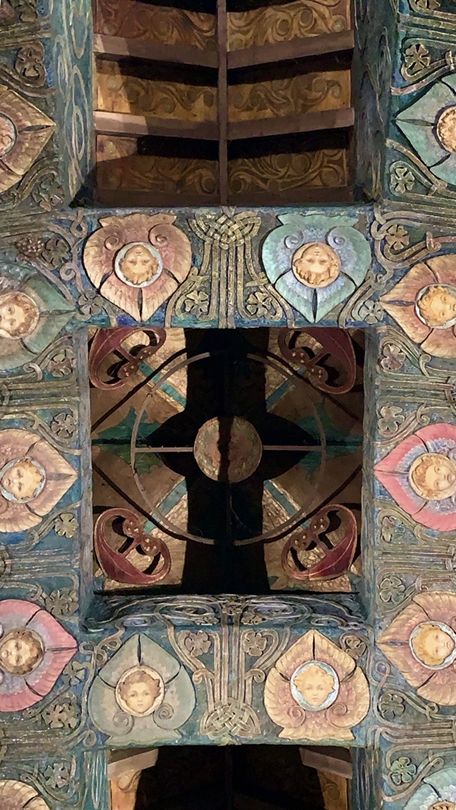
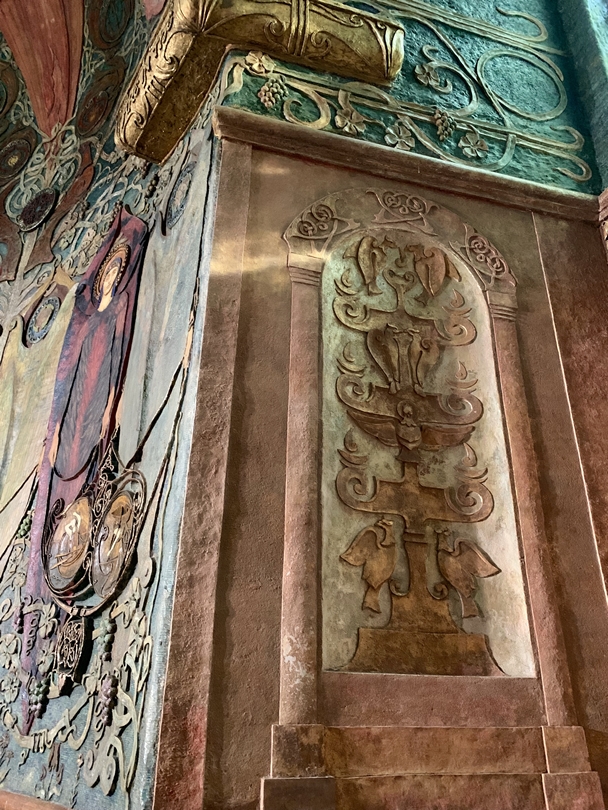
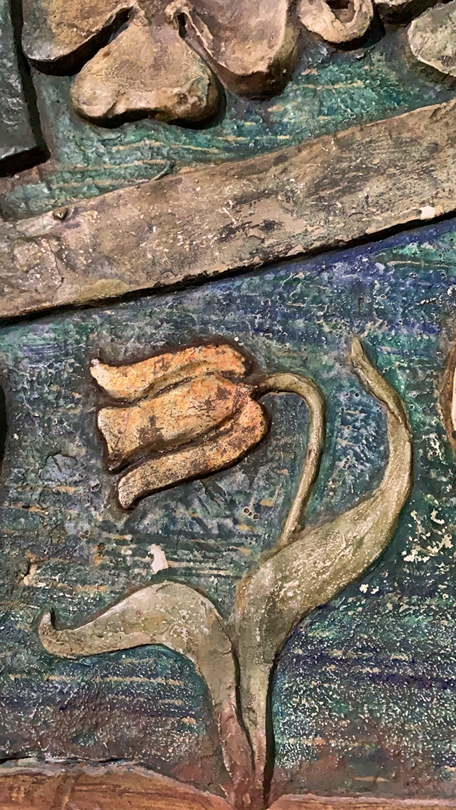
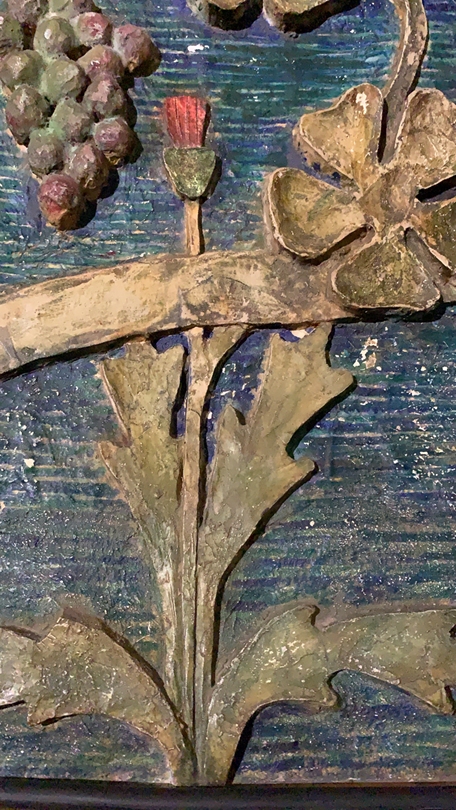

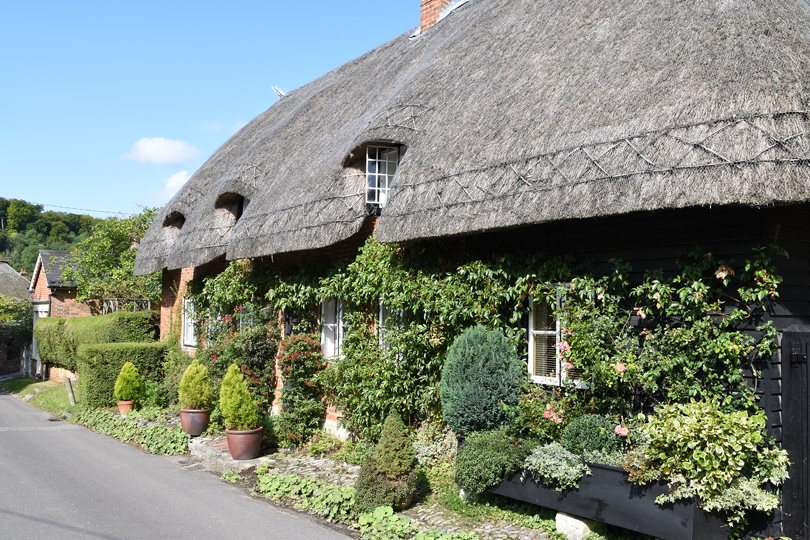
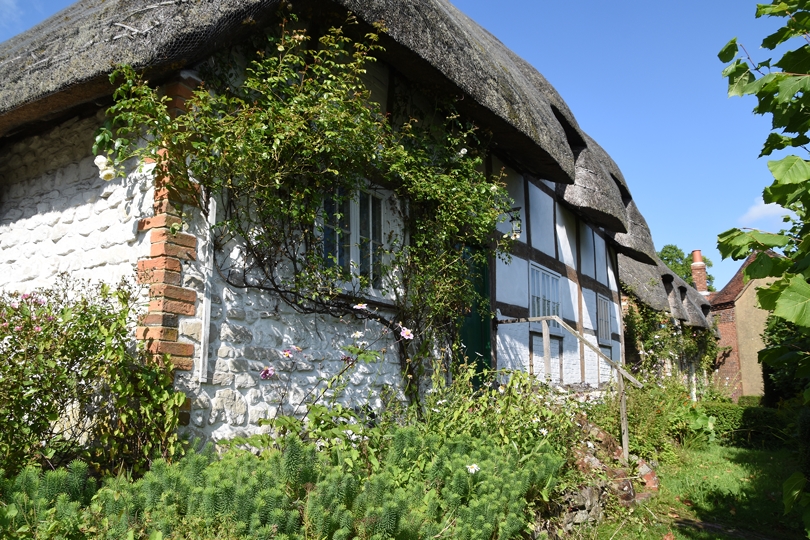
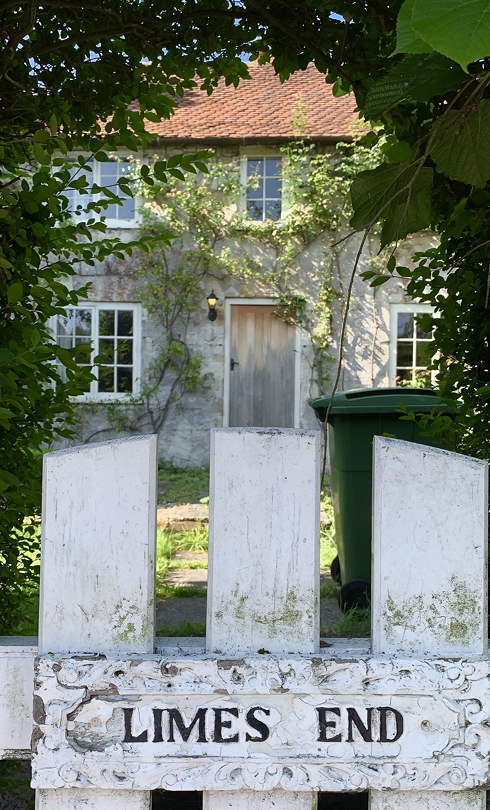
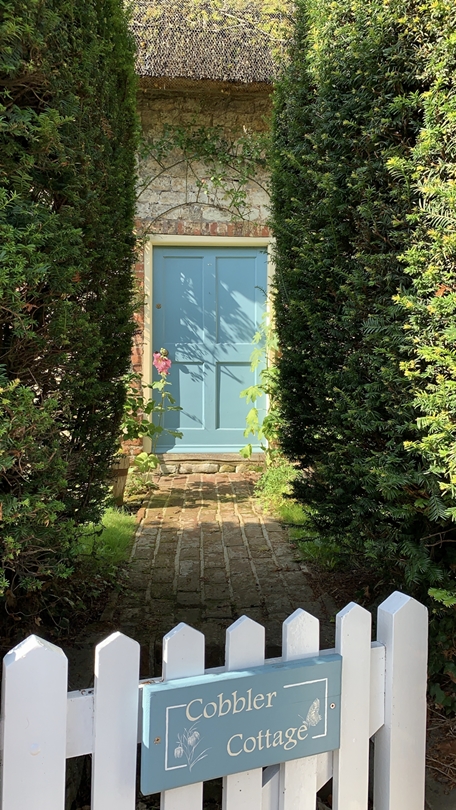
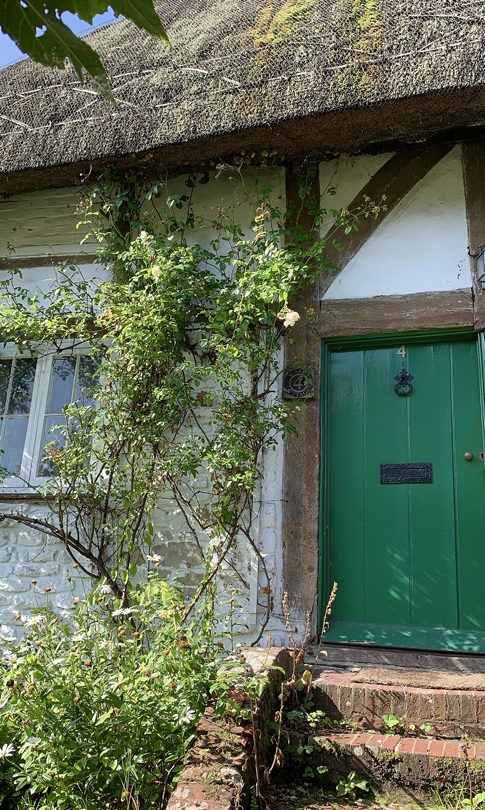
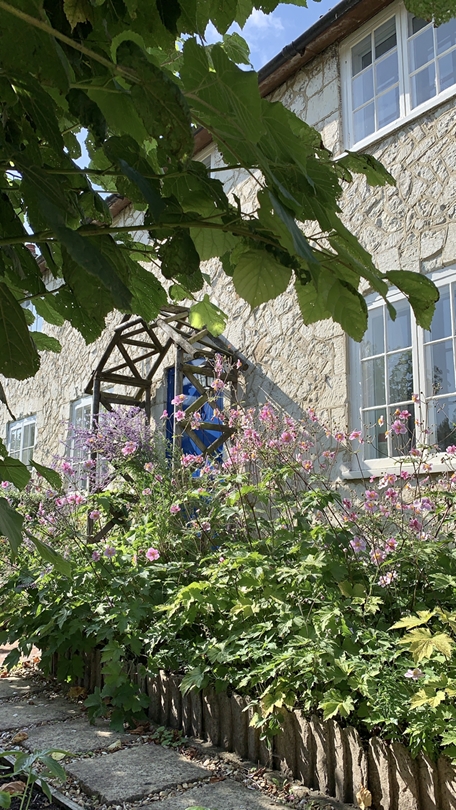
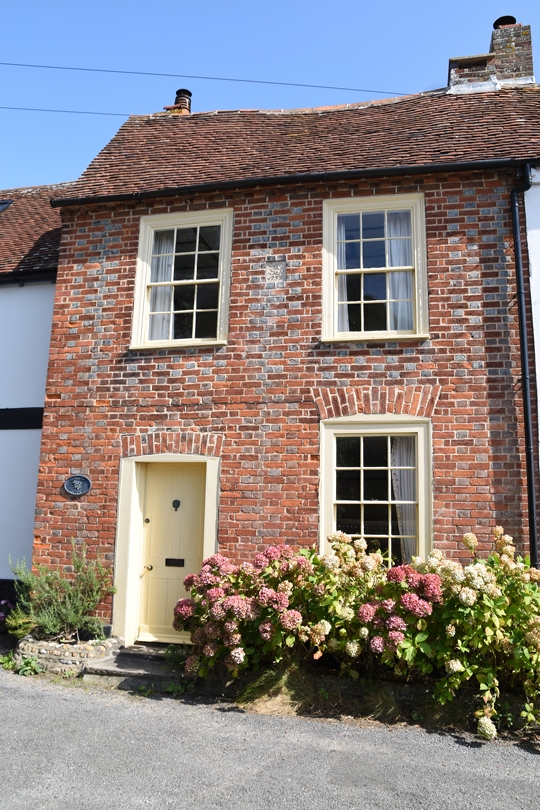


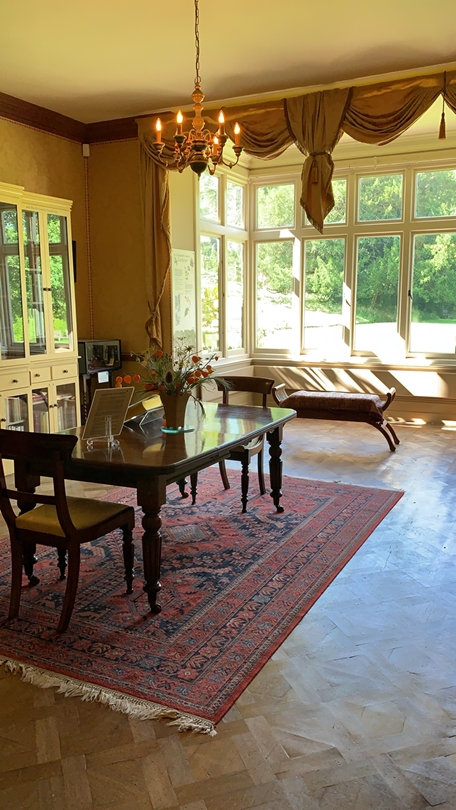
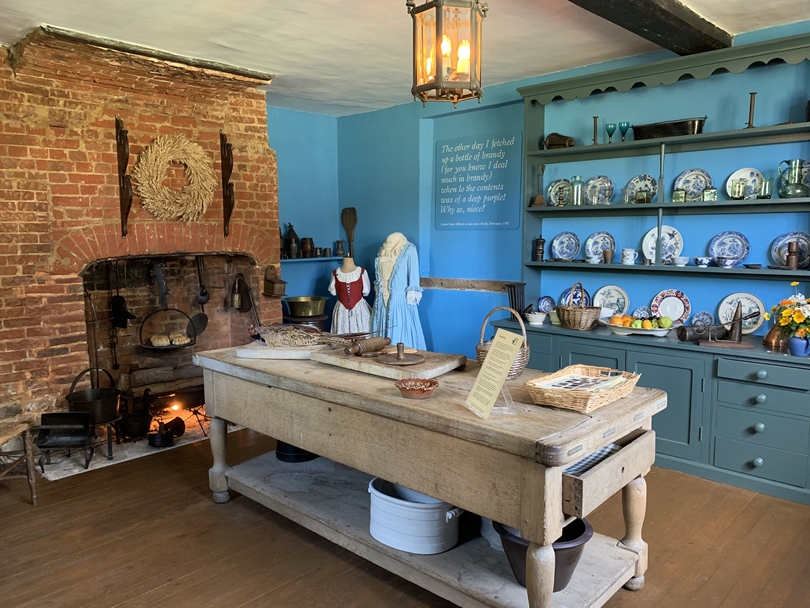
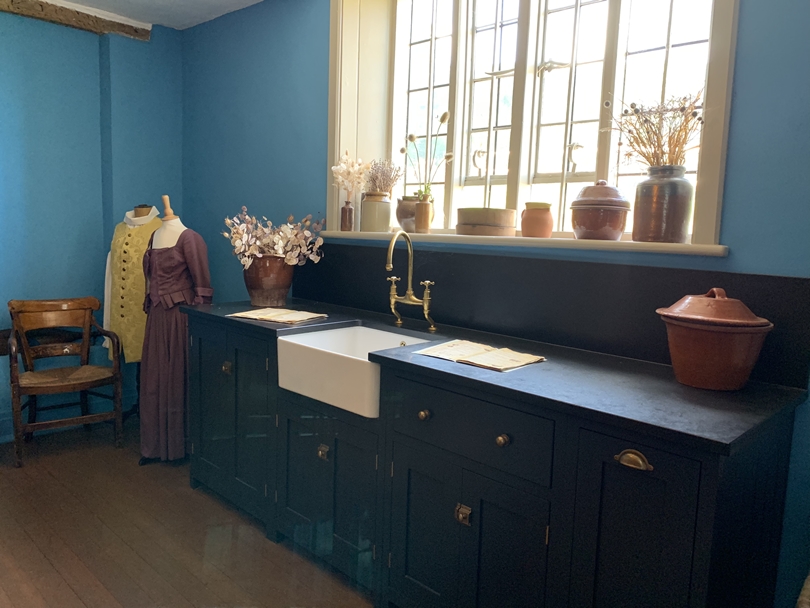
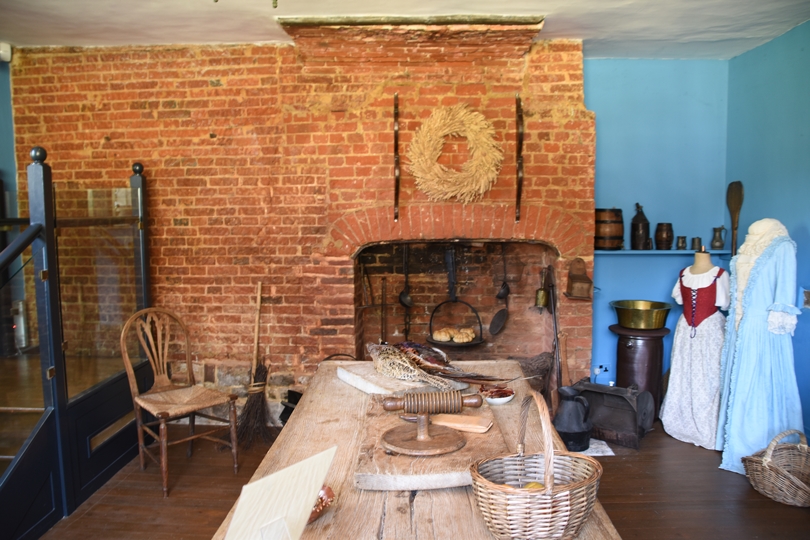
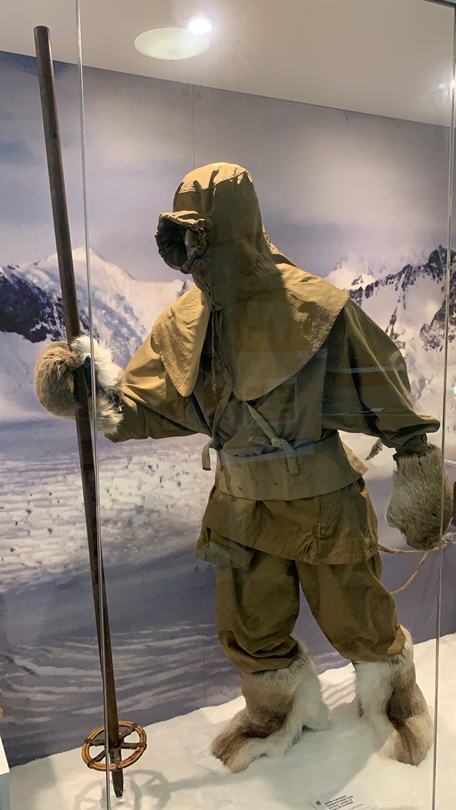
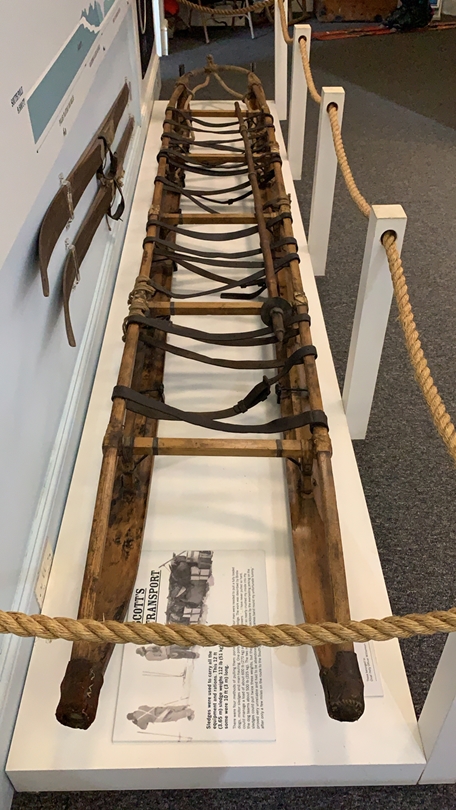
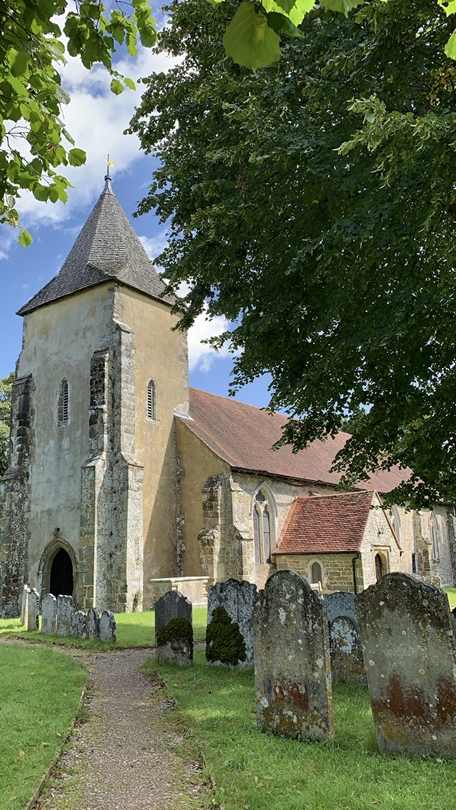
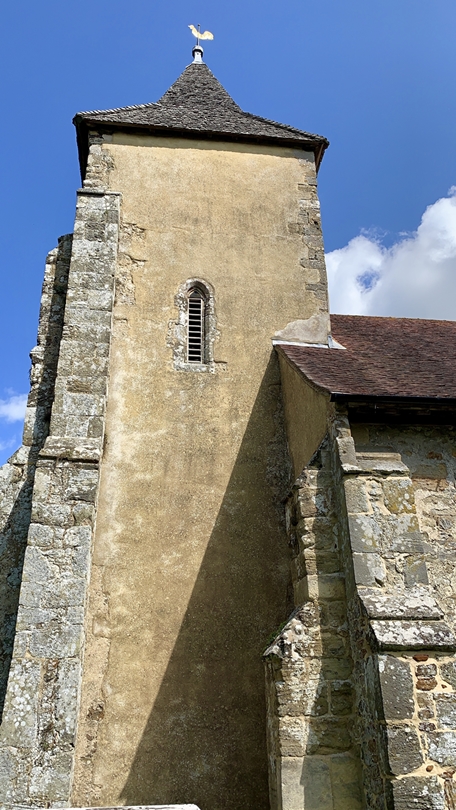
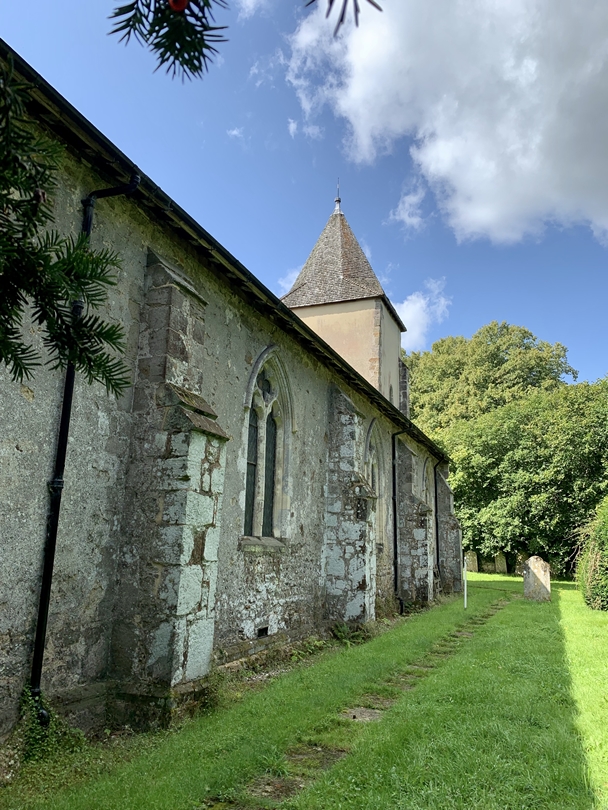
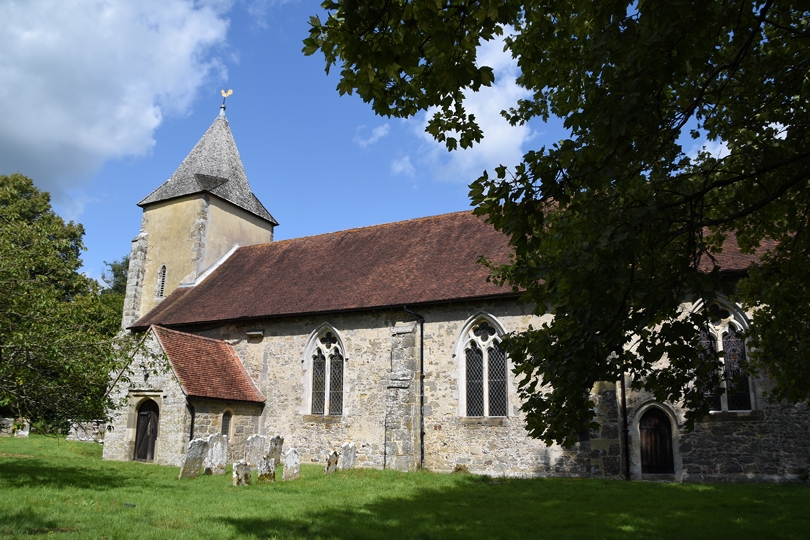
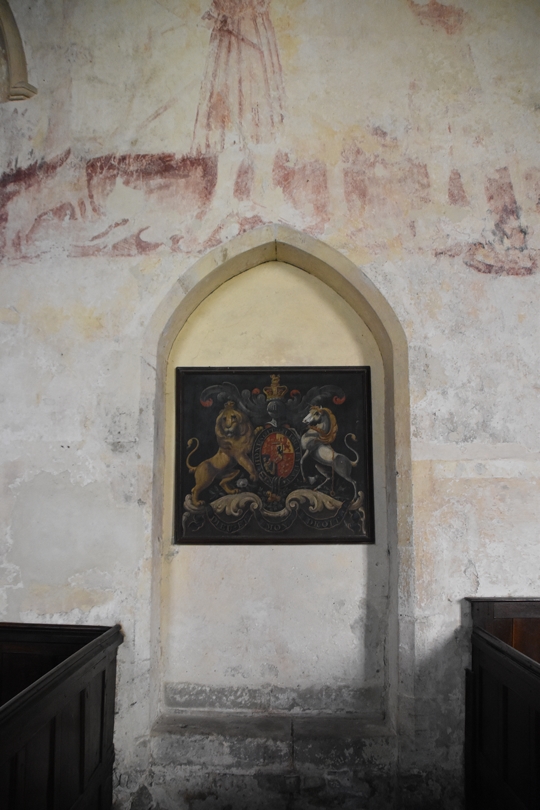
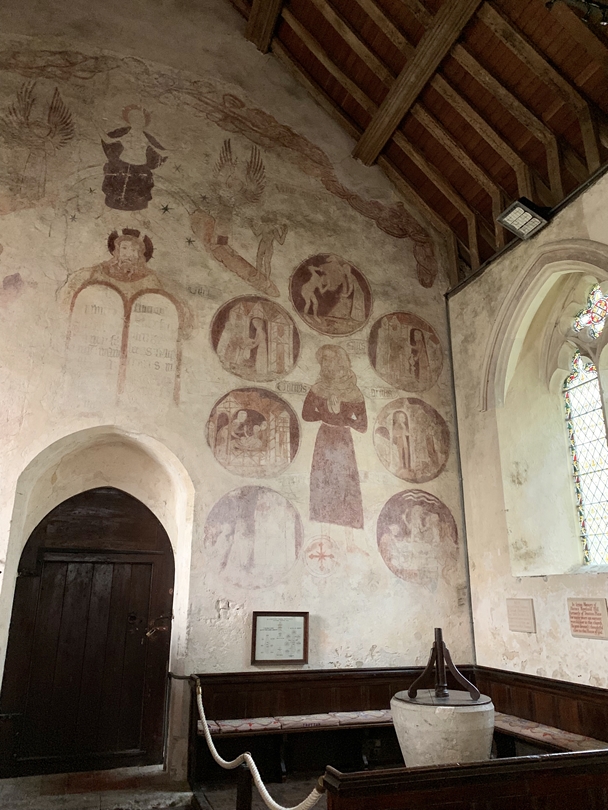
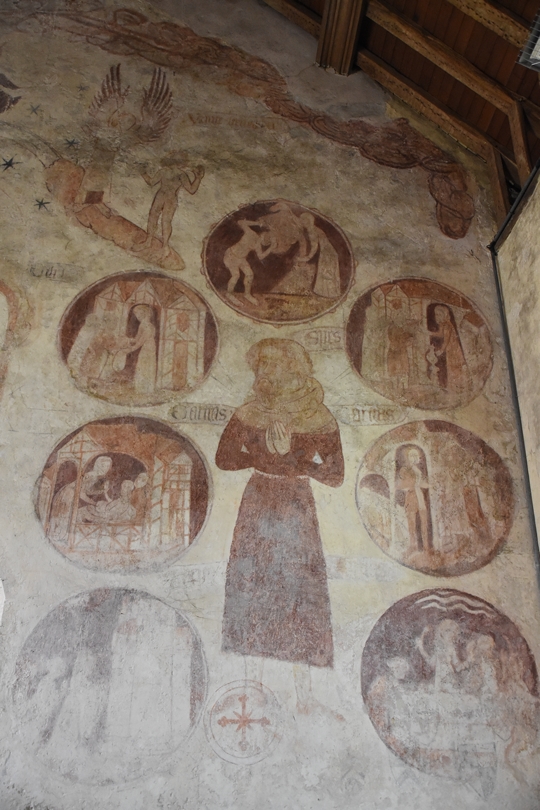
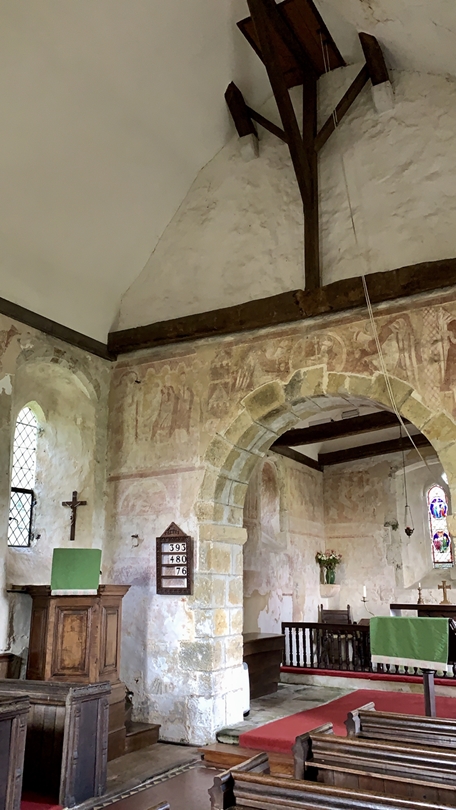

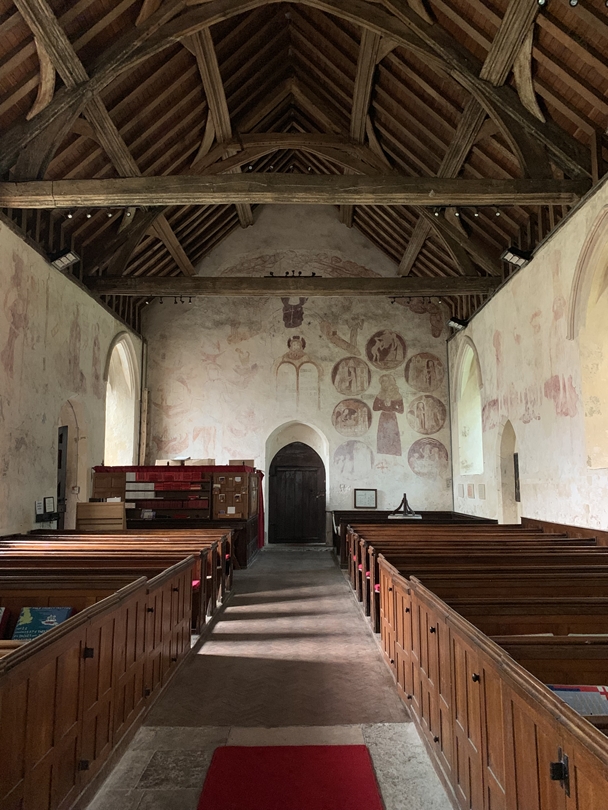
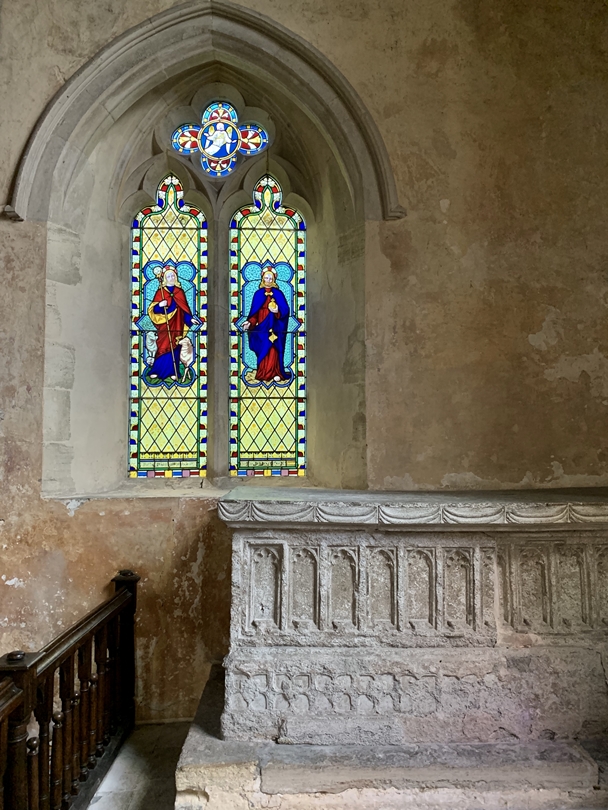
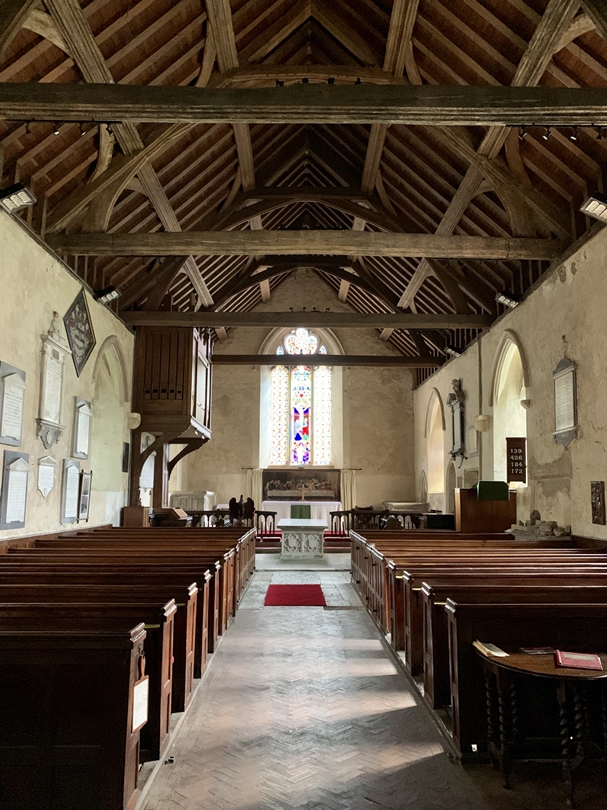
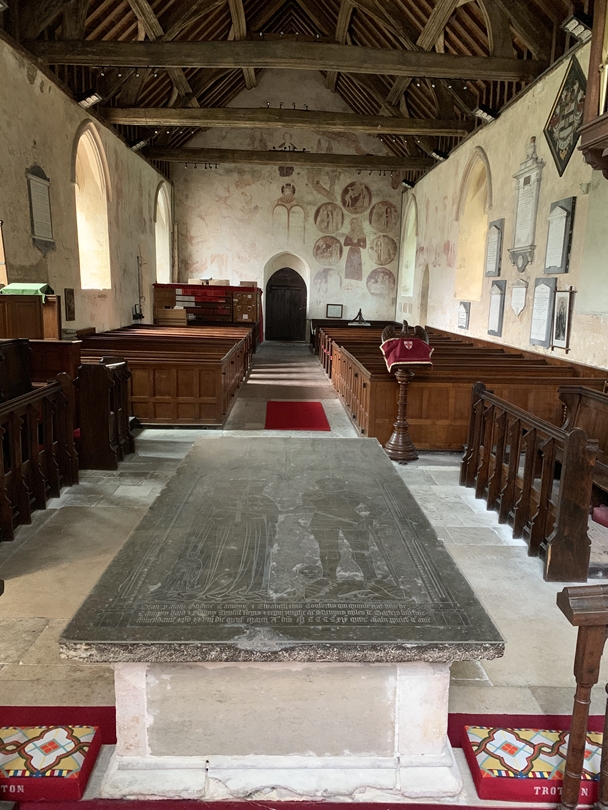
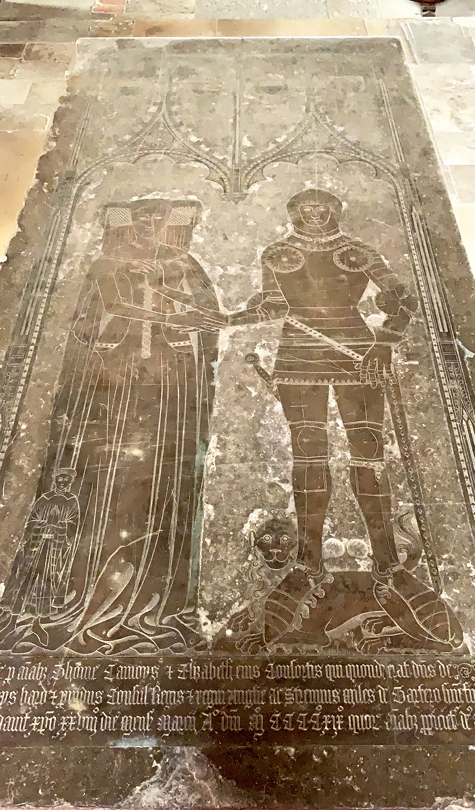
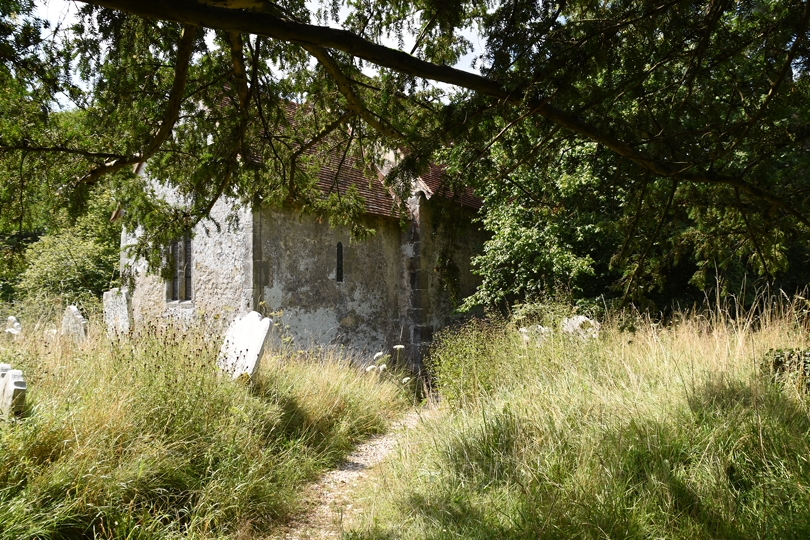

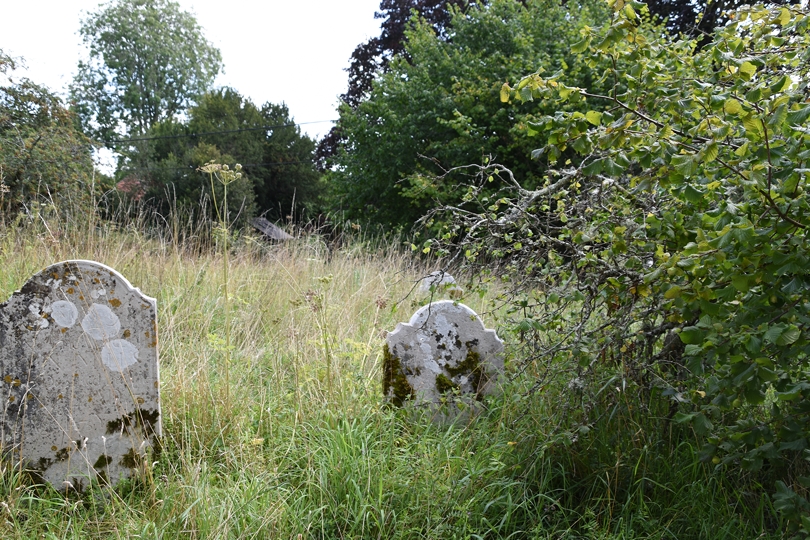
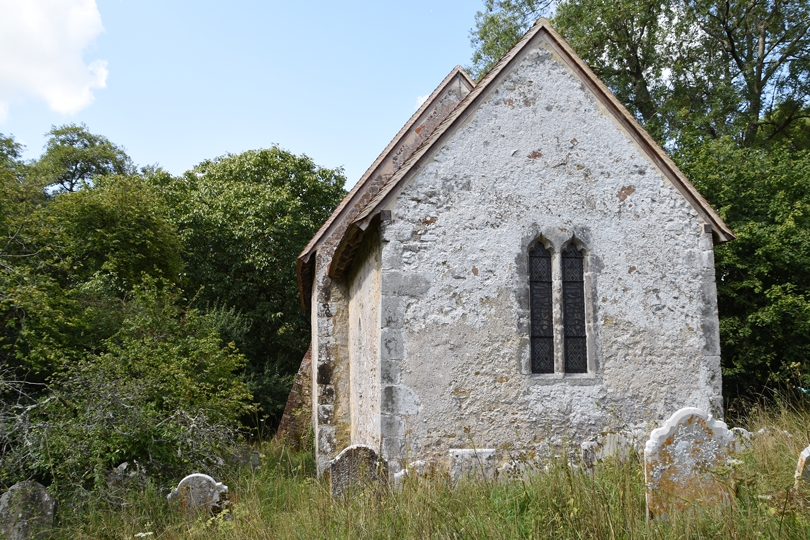
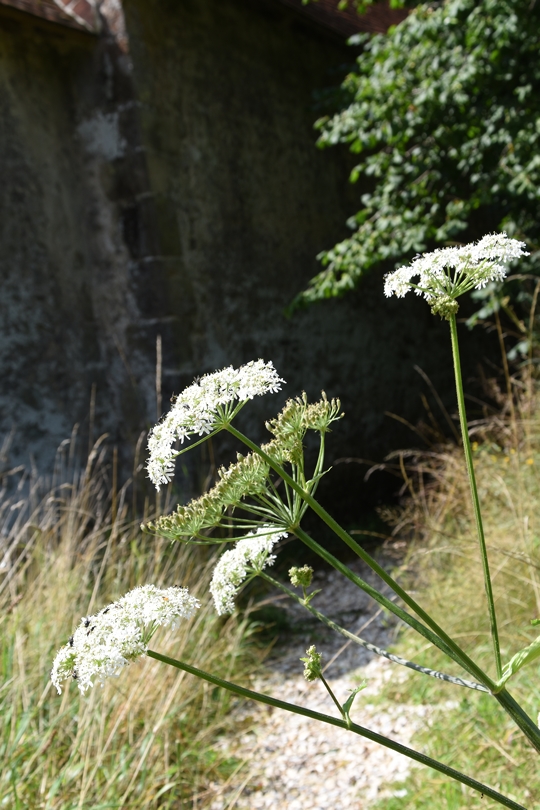
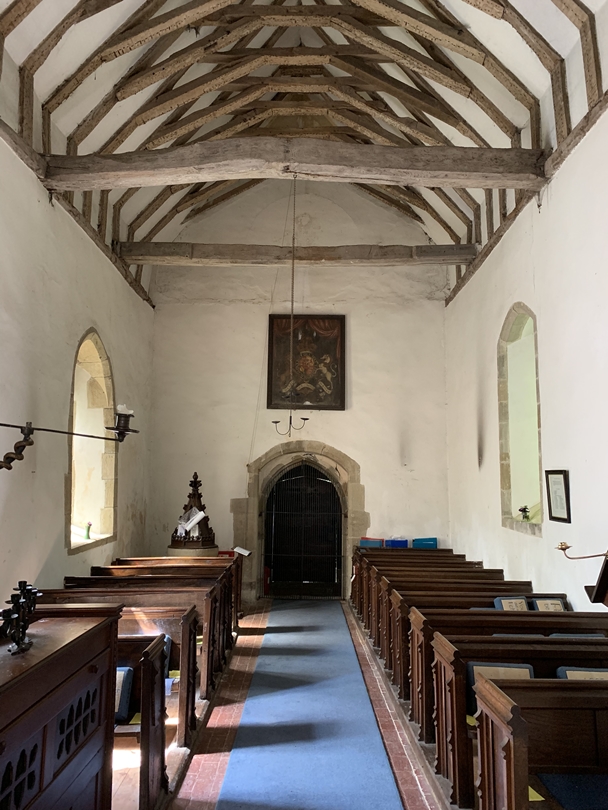
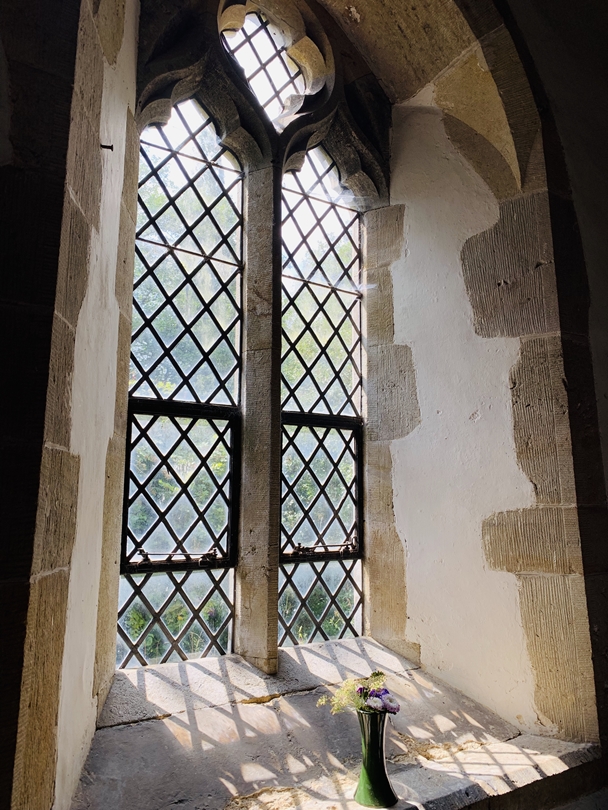
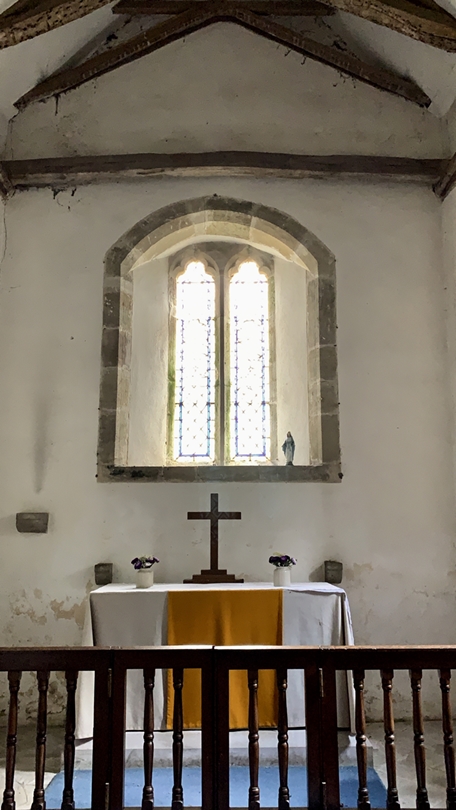

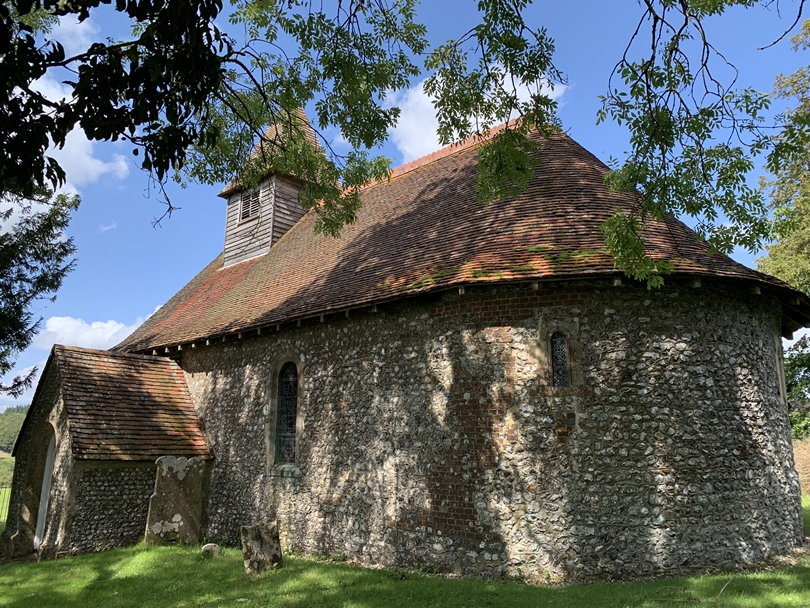
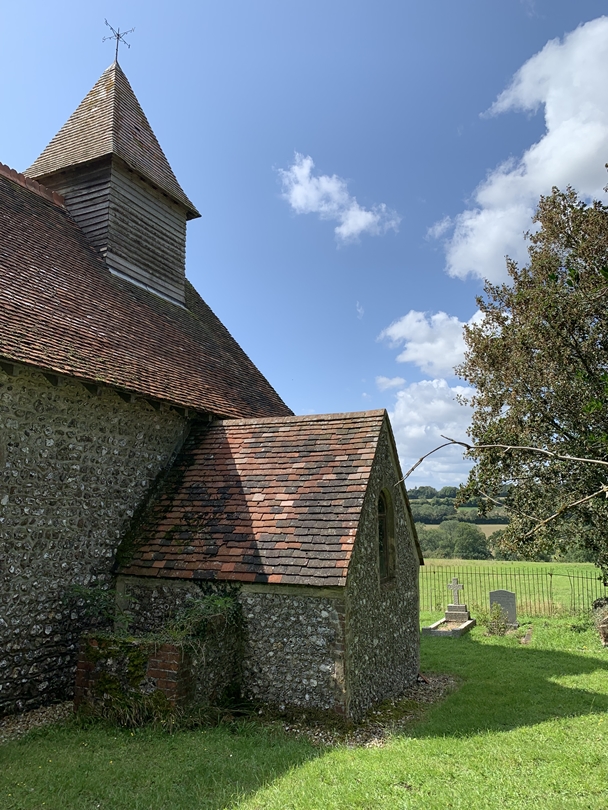
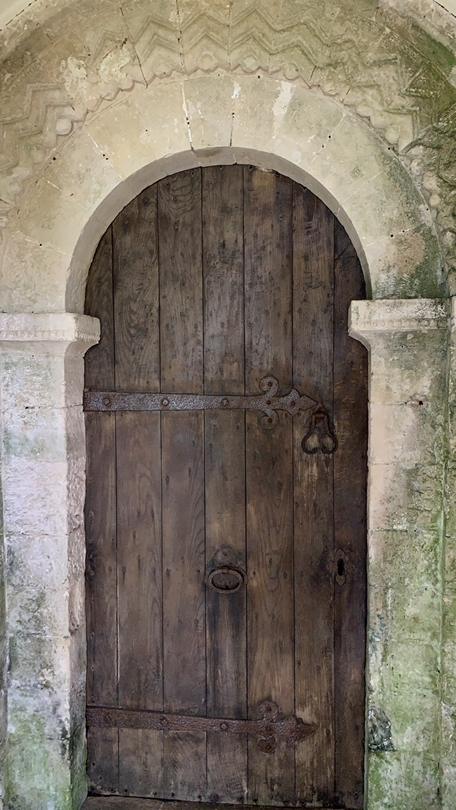

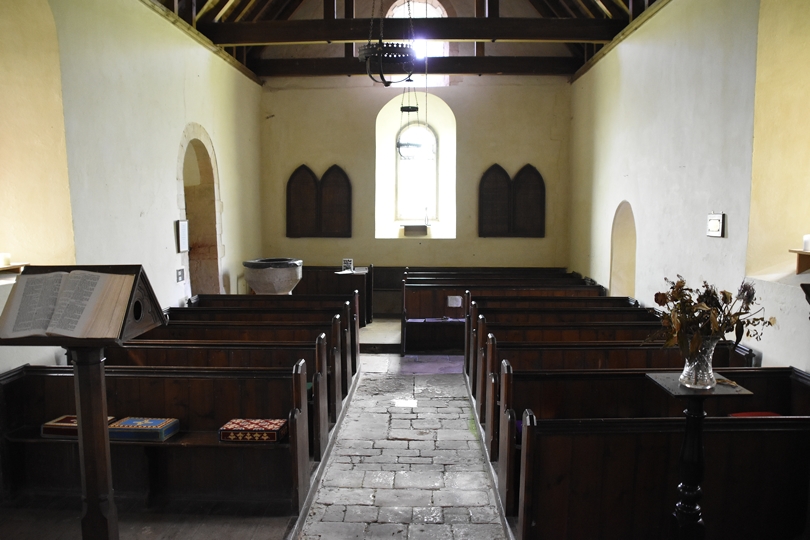
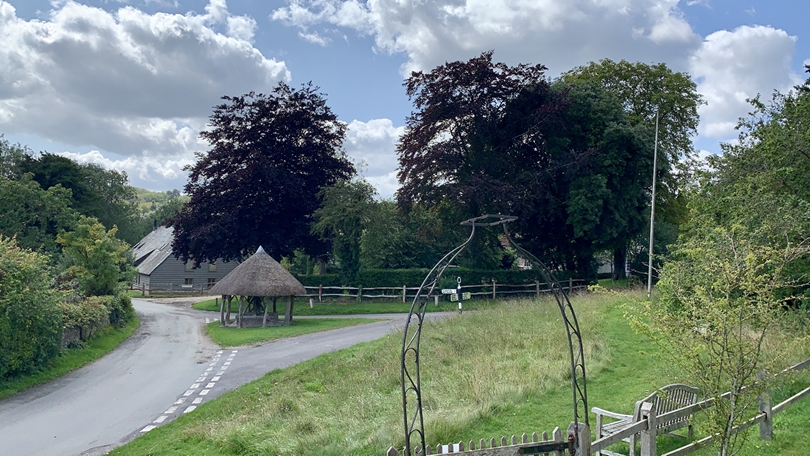
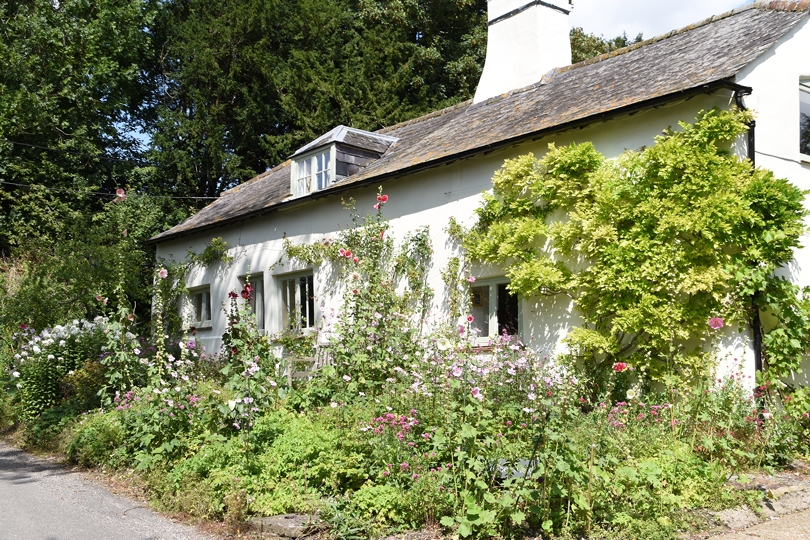
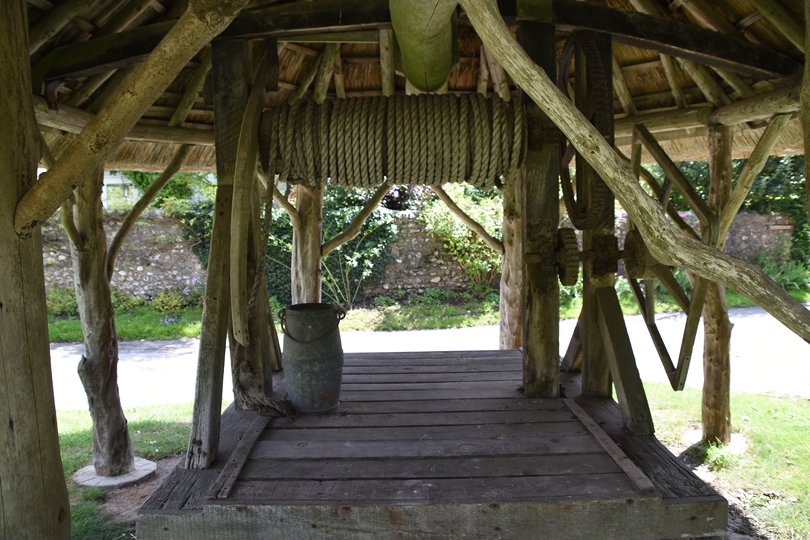
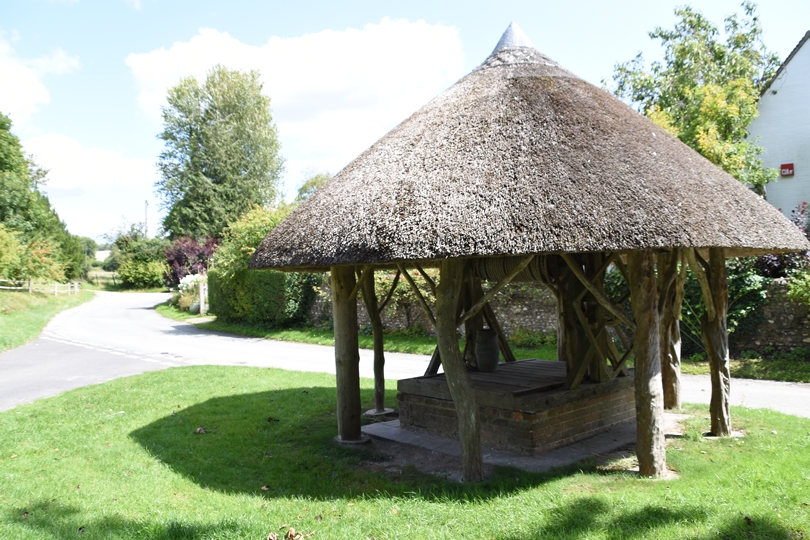
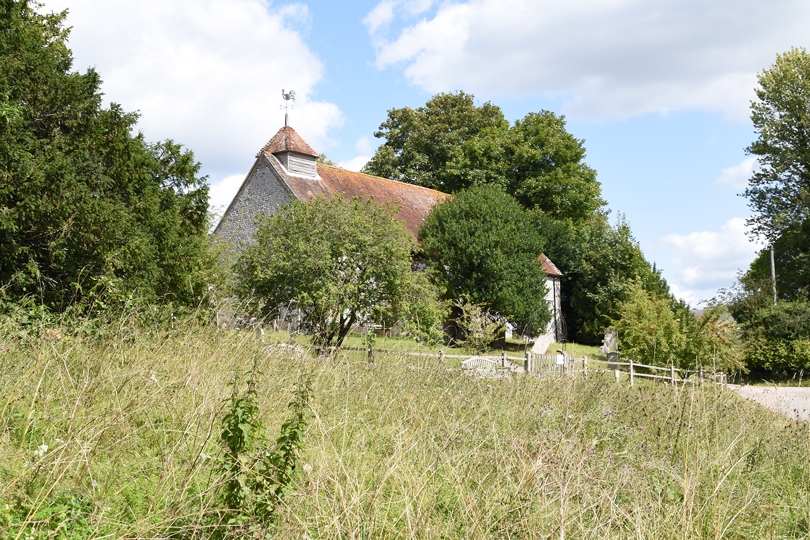
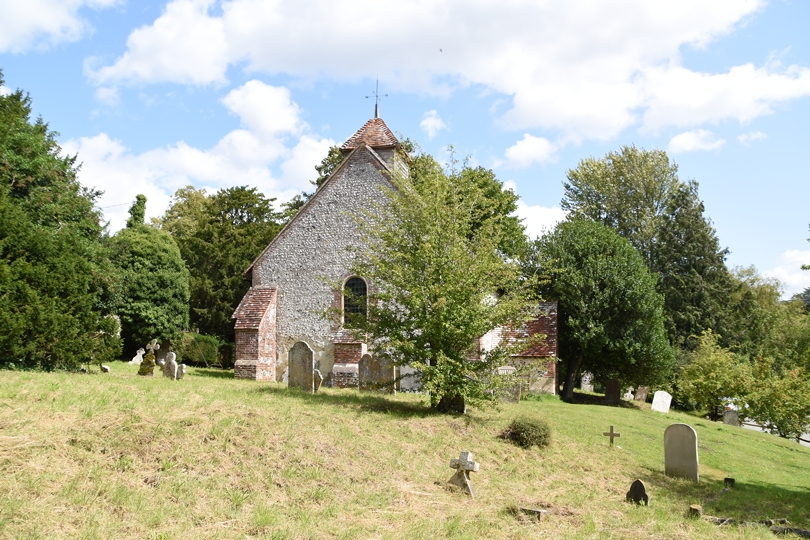
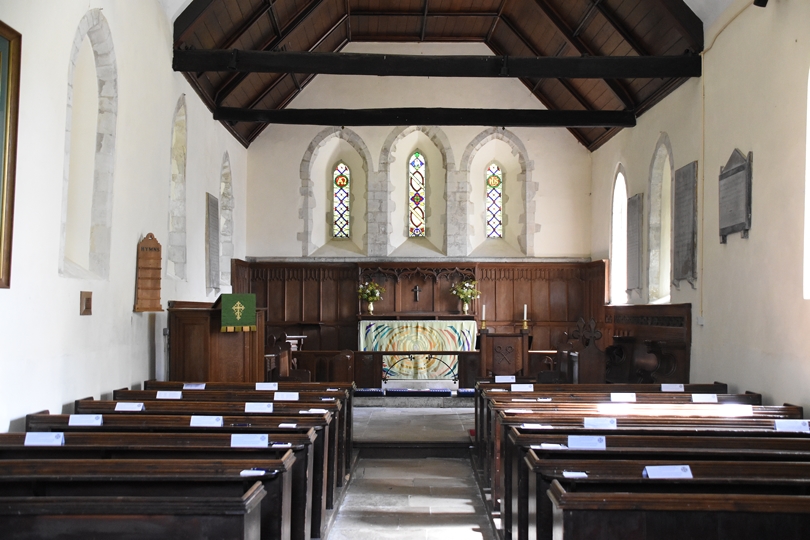

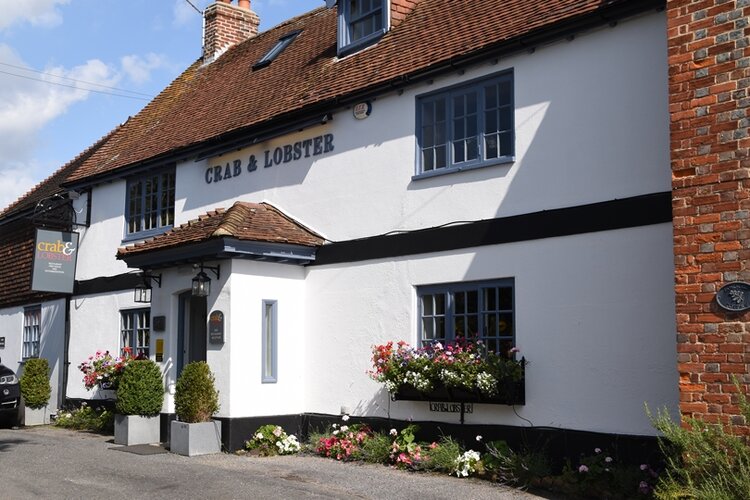
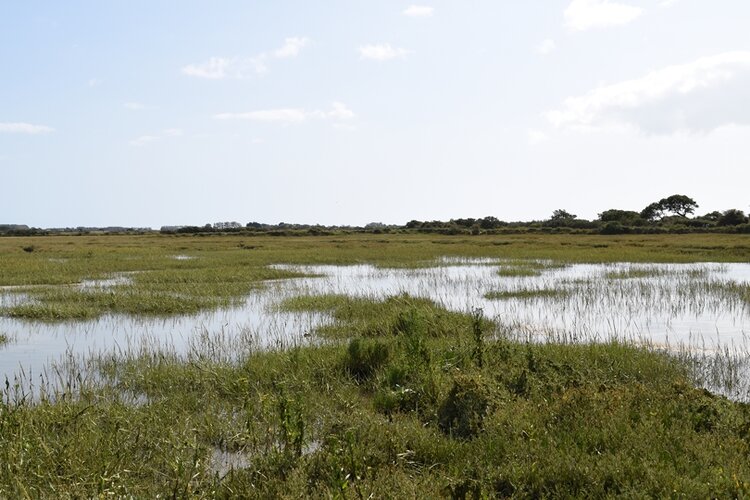
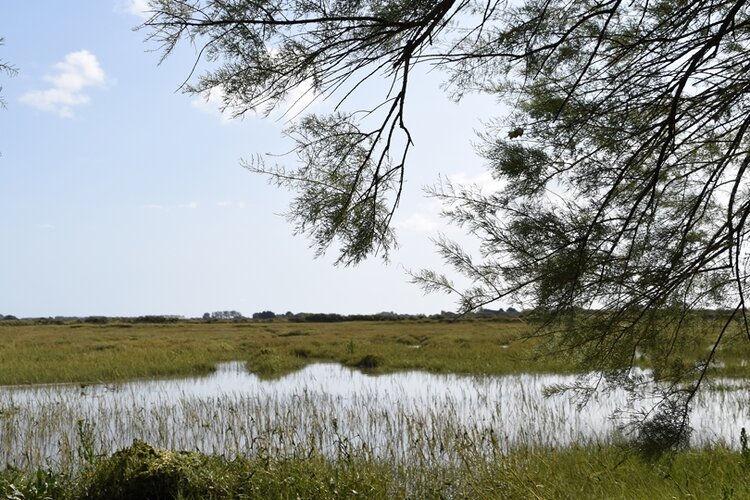
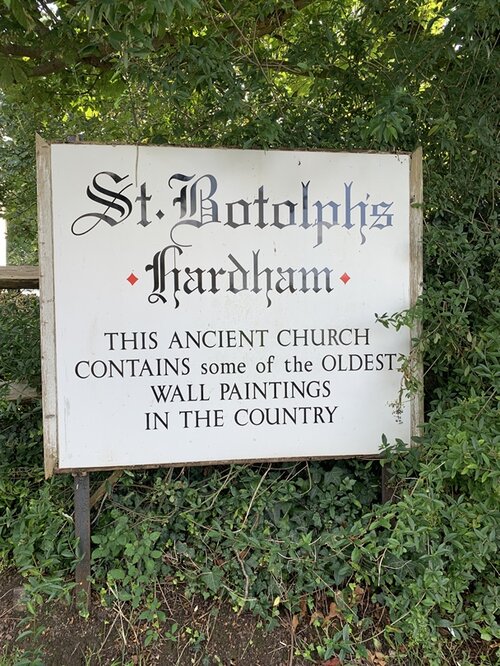
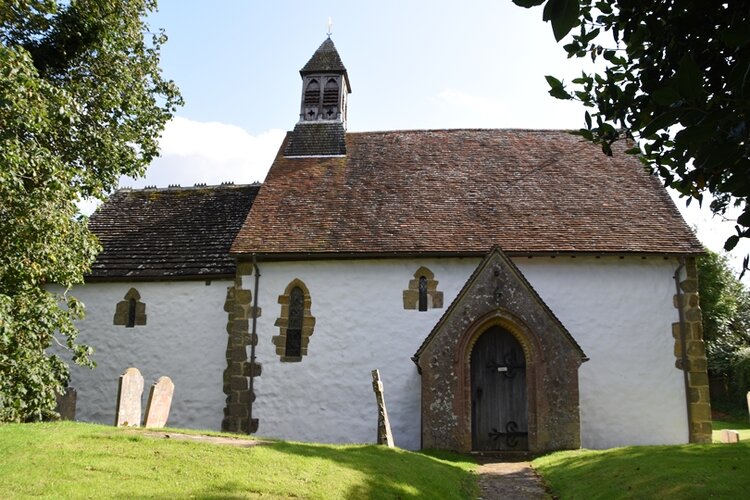
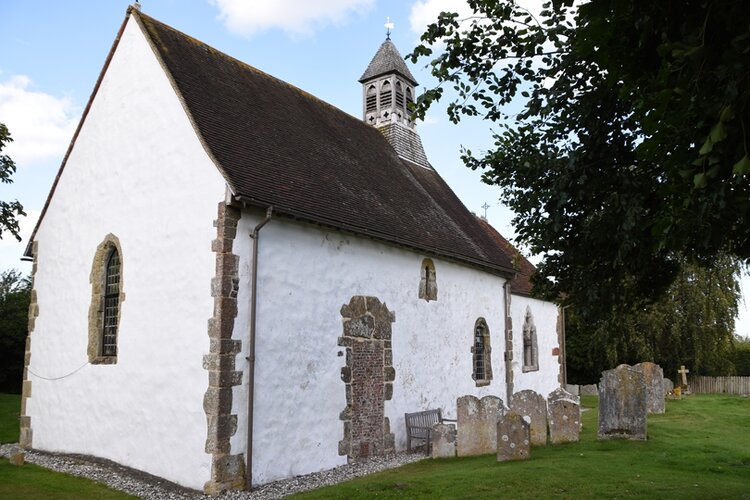
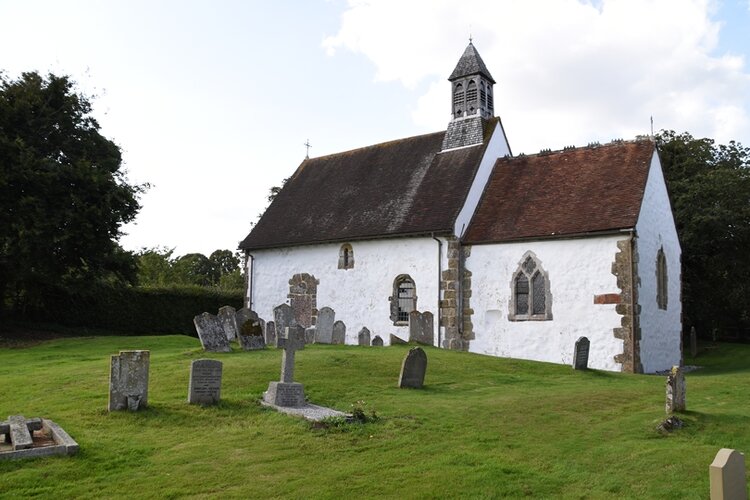
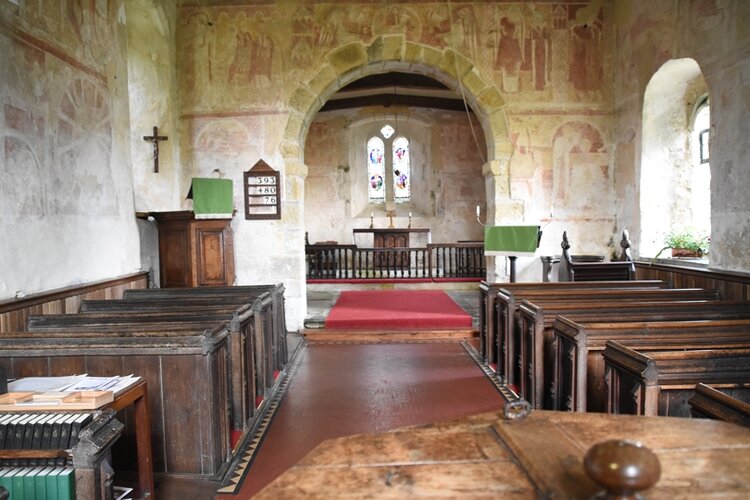
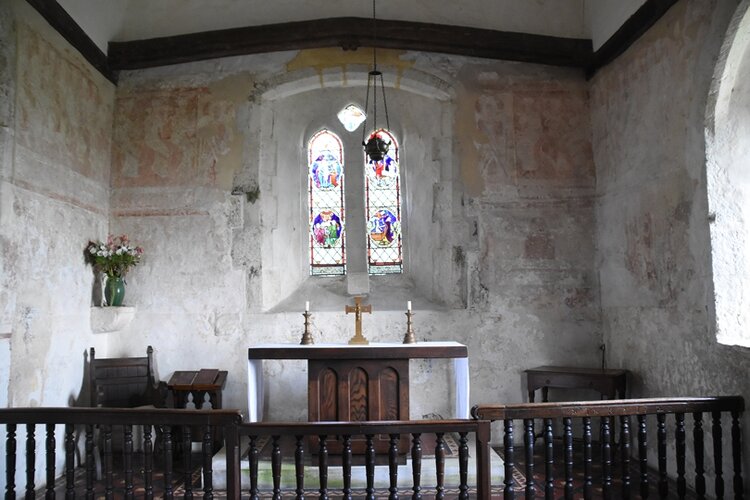
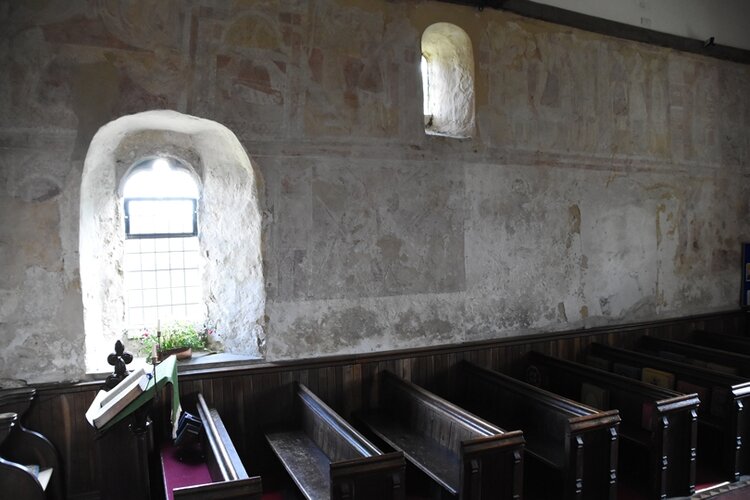
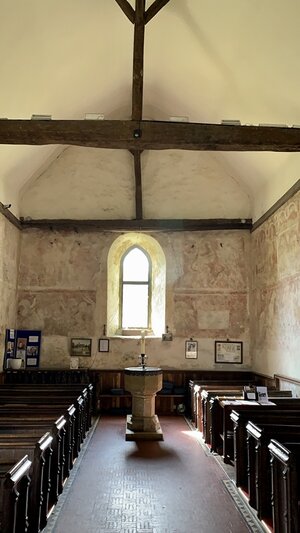
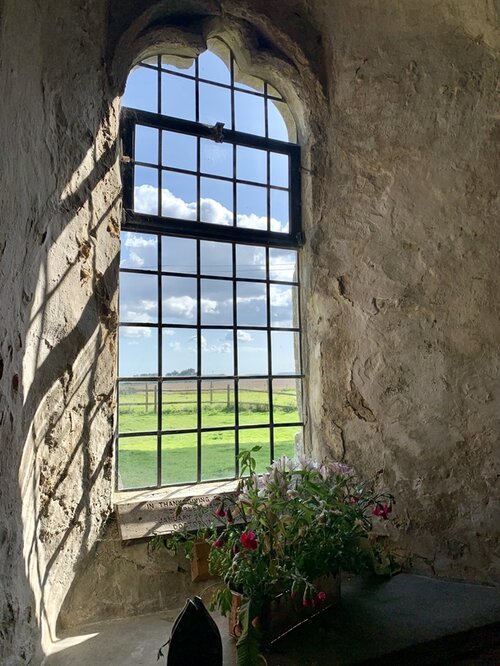
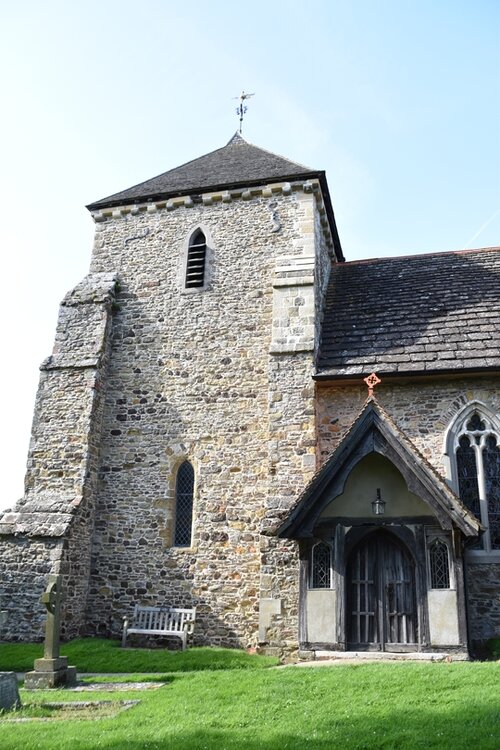
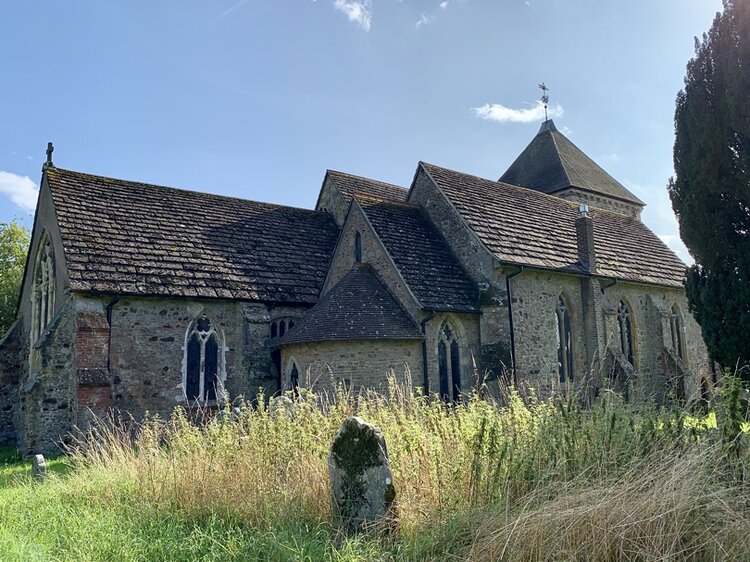

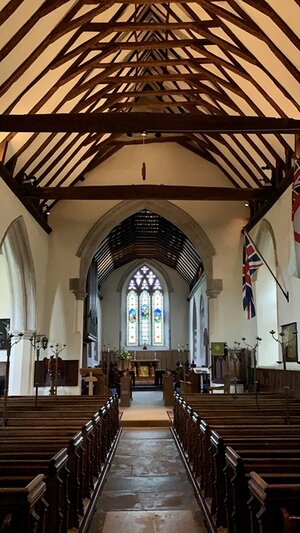

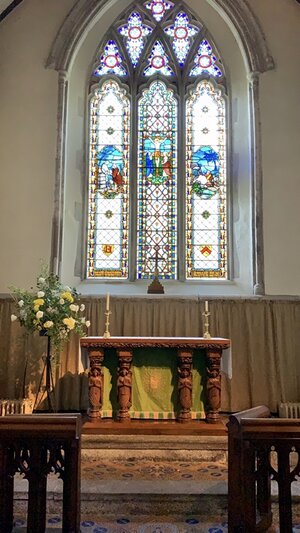








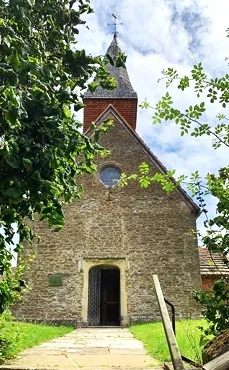
I am delighted to announce that in September 2019 I became a published photographer, that is, I had my first ever photographs published in a book, The Gardener’s Travel Companion to England, by well-known Australian author Janelle McCulloch which features a variety of beautiful English gardens.